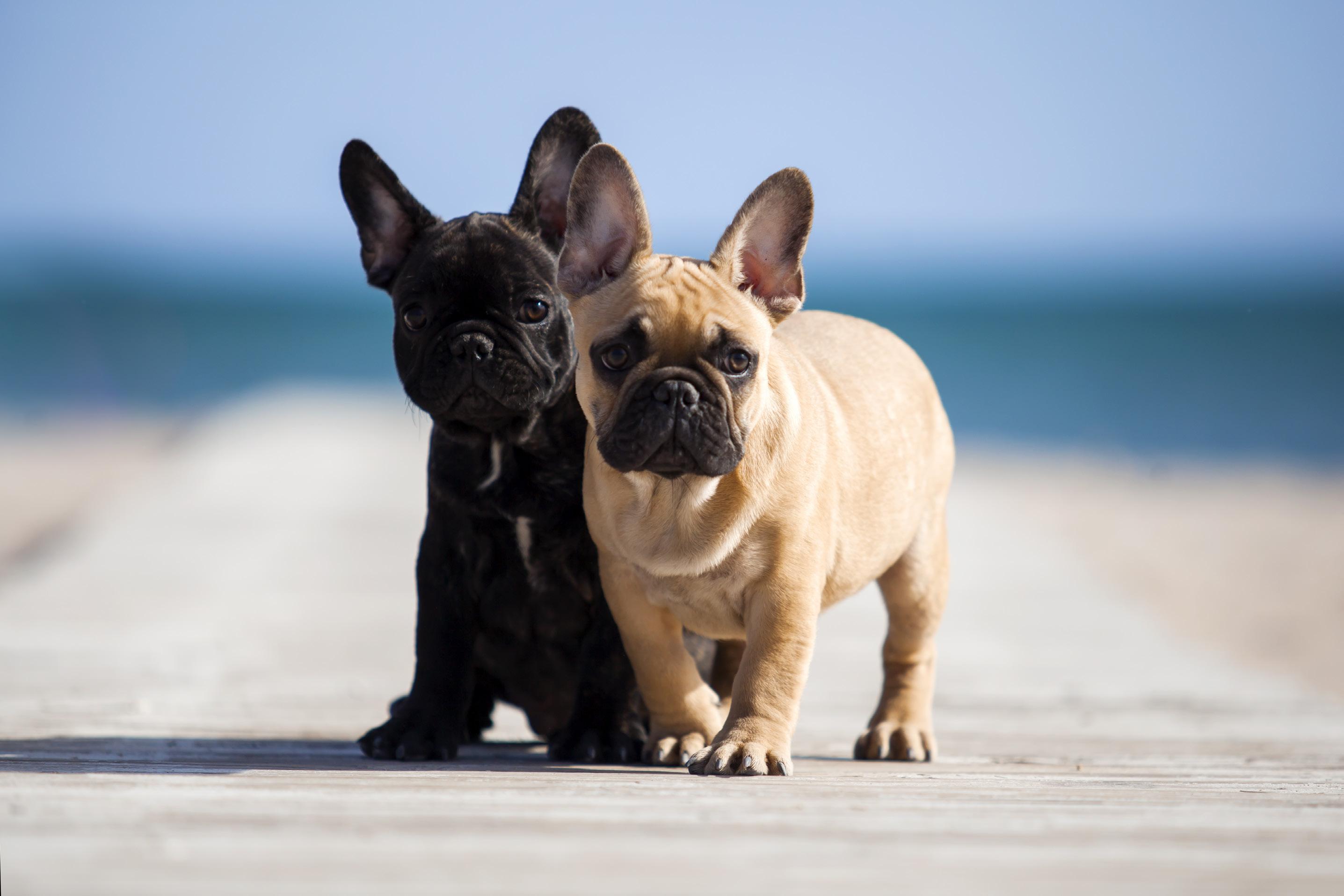
New Puppy Owner Guide www.dogsvictoria.org.au Life with your new puppy starts here..... Brought to you by Dogs Victoria Copyright © Dogs Victoria 2023
Congratulations on your new puppy!
Welcoming a new puppy to the family is a very exciting time for everyone involved.
No doubt, you will have spent a lot of time doing research and deciding on the right breed for your family situation and lifestyle, finding a reputable breeder, and preparing for the new responsibilities that will come with a life-long canine friend.
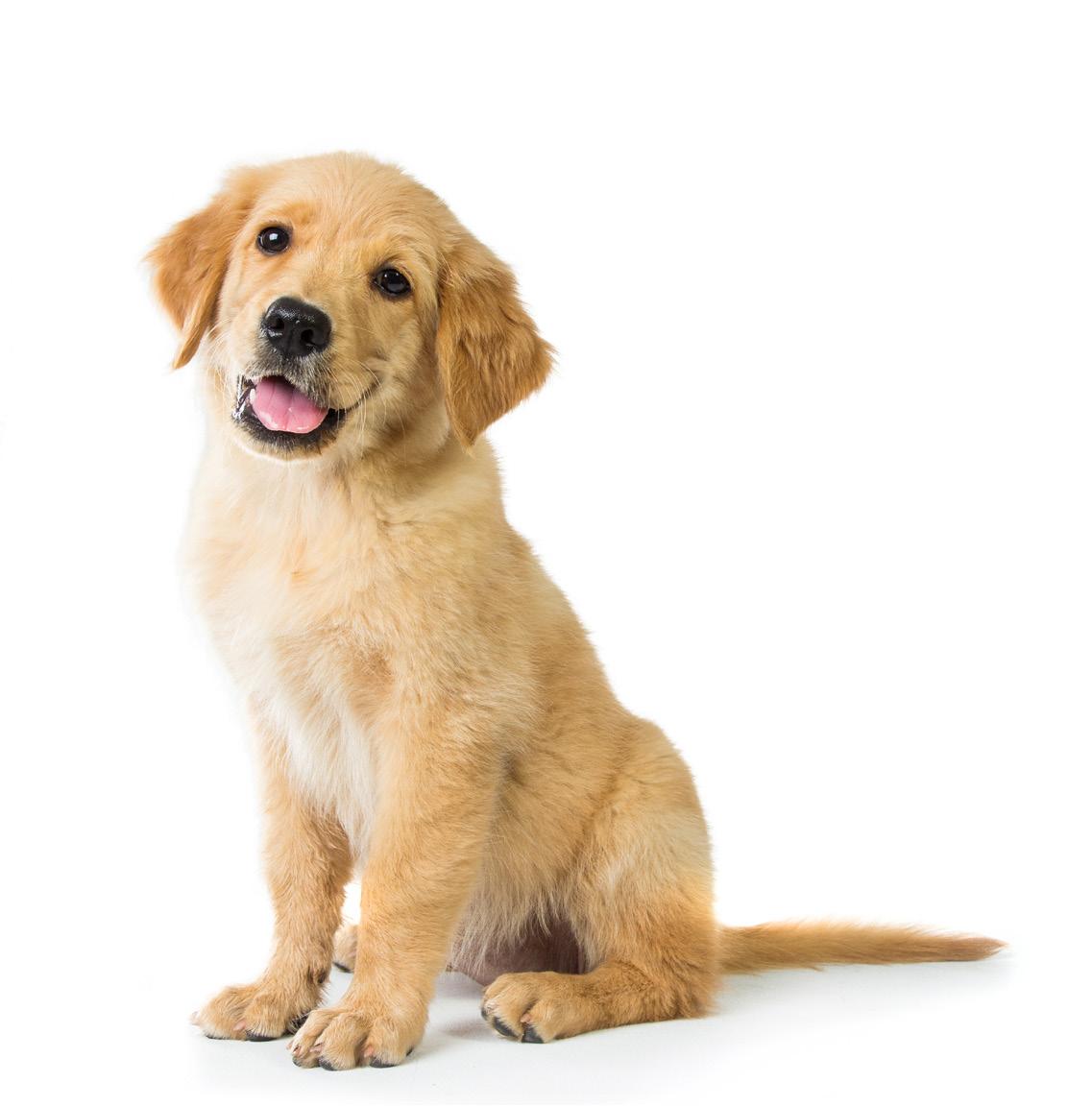
Your breeder will have spent time answering your questions and preparing you for the transition of your puppy into its new home. Your breeder will have also provided you with lots of written information about feeding, worming, vaccinations and other care your puppy will require. Your breeder will be a valuable resource of information throughout your puppy’s life, and will be excited to receive updates even into your puppy’s golden years. After all, your puppy is part of their family too!
The benefits of dog ownership are well documented – dogs provide companionship, a reason to get out of the house and exercise, and it has been shown that simply petting a dog can lower a person’s heart rate and blood pressure. Dogs are social facilitators – people are more likely to engage in conversation when a dog is present, and for children, they can teach important life lessons.
All of these benefits come with a level of responsibility. Your new family member relies on you for everything – food, water, shelter, exercise and health care. Like children, they need to be educated and taught the skills and behaviours that they will need to become a valued member of society.
We have included some information about those vital first few weeks, how to keep your new pup healthy and safe, where to find information and some training tips to set you on the right path.
Although most people are simply looking for a family pet and companion, there are many activities that you and your dog can become involved in – from basic pet dog training to competitive dog sports, dog showing to breed club activities.
Many of these activities provide an opportunity for your dog to develop its natural abilities and talents, offering much needed mental stimulation and exercise, and giving your pup an outlet for behaviours that have been selectively bred for over time. They can also foster a much stronger relationship with your new family member as you learn together.
2 Dogs Victoria New Puppy Owner Guide - 22/02/23
Welcome
Dogs Victoria and its affiliated clubs, offer a wide array of dog related activities, information, events and training opportunities across the state, and is a great way to meet other like minded dog owners and breed enthusiasts. So why not get involved…
3 Dogs Victoria New Puppy Owner Guide - 22/02/23 Contents 1 – Life with your new puppy 5 The first few weeks 5 Setting your puppy up for success Preventing problems Getting into a routine Other pets Children and puppies First vet visit 8 So much to learn & teach 10 Puppy class Toilet training Handling and grooming Appropriate chewing Learning to be alone Getting out and about with your puppy 16 Keeping your puppy safe Appropriate exercise Travelling with your puppy Holidays and your dog Responsible dog ownership – the law and you 19 What is responsible ownership? Registering your dog with your local council Microchip identification Minimum standards of care 2 – Activities for you and your dog 20 Breed clubs 20 Breed club events Basic training for your puppy 22 Dog sports and activities 23
to
Striving
be the best - conformation showing & junior handlers
Taking training further – agility, obedience, tricks and dances with dogs
3 – Benefits of joining Dogs Victoria 33
Using their noses - nose work, tracking and track & search Fit and fast – endurance and lure coursing Doing their job – hunting, herding, going to ground, sledding and therapy dog
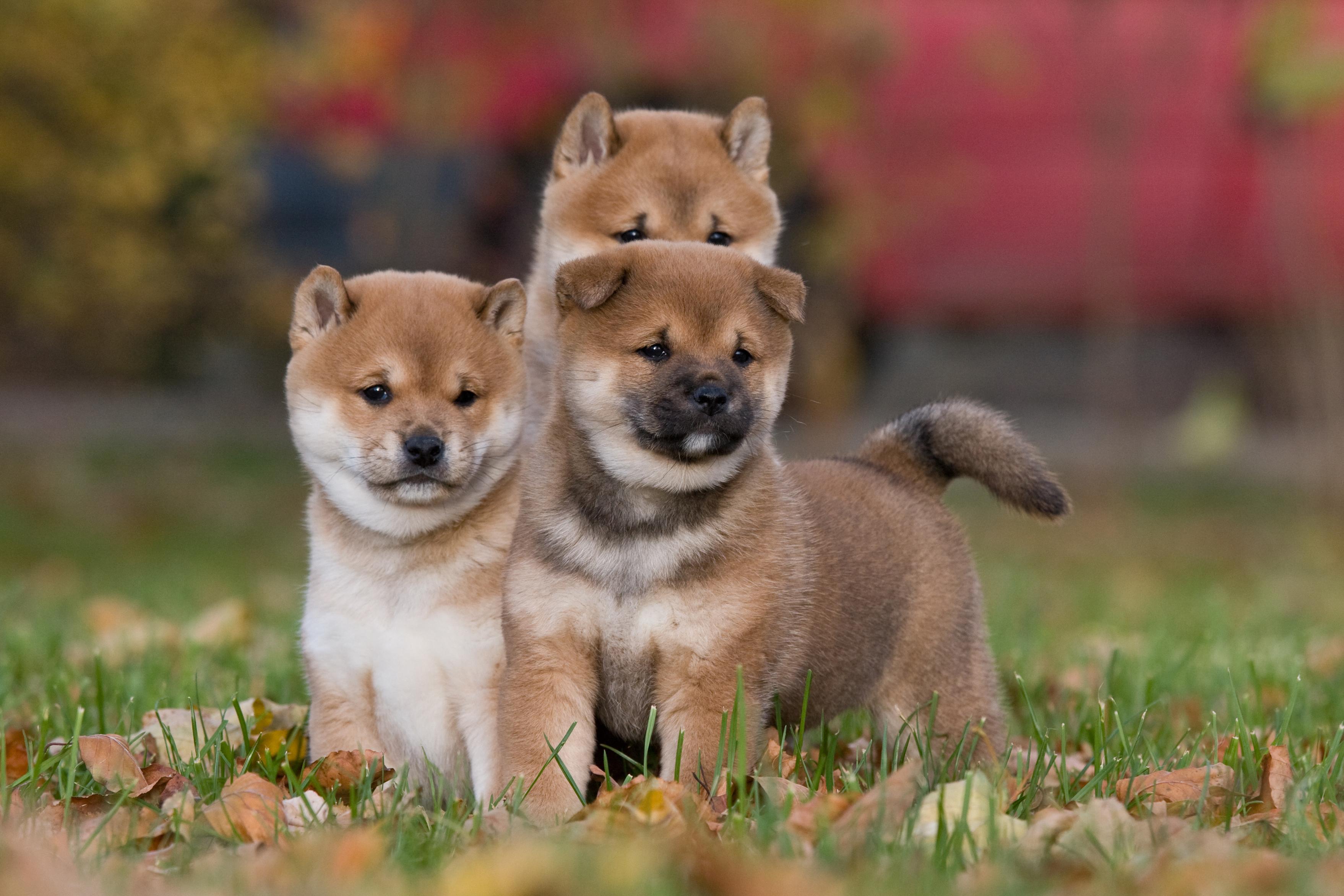
The first few weeks 1 - Life with your new puppy
Setting your puppy up for success
Before your puppy even heads home, it is time to prepare for its arrival. You will want to have a think about where the puppy is going to sleep (both now and when it is a fully grown adult), where it is going to spend time outside, and the places it will be allowed and not allowed to go. If you are at work, or at school, where is the puppy going to be housed? Is there adequate shade and shelter, and is there water accessible at all times in a way that the puppy cannot tip or spill it?
Your puppy will have been living with its littermates, who provide company as well as warmth, so it might take a little time before your puppy gets used to being alone. Try to make sure that your puppy is not isolated away from the daily goings on of the family nor left for long periods of time in the first few weeks, and work on slowly increasing the amount of time you will be away.
Preventing problems
Puppies are naturally very inquisitive, so you need to ‘puppy proof’ your property by doing a thorough hazard check. It is a good idea to get down to puppy height and have a look around the places the puppy will have access to.
Similar to a baby or young child, you have to look for things that could potentially be a problem – are there electrical cords that might accidentally be chewed on? Is the remote control for the TV within reach? Do the kid’s toys, shoes or clothes need to be safely packed away? Or are there any potentially toxic items in the area? It is normal for puppies to go through a phase of putting everything in their mouth, so anything they can reach is fair game and may end up being chewed on or carried around.
If an area is going to be ‘off limits’ then you can start by making sure you have a way of preventing an exploring puppy from gaining access. Inside the house, baby gates may be useful to limit access to stairs, certain rooms or areas of the home. Outside some strategic fencing may help keep your puppy out of your prize rose or herb garden.
Another thing to consider is what you plan to feed your dog when you first bring it home. Your breeder will have given you some advice on feeding, and hopefully will have given you some of the food your puppy is currently eating to prevent any sudden changes in diet that might lead to tummy upsets in the first few days.
Getting into a routine
Although it is super exciting the day your puppy comes home, it is important to try to establish a routine as soon as possible. This helps the puppy transition to its new home as there is some level of predictability in its life such as a schedule for meal time, play time, toilet time and quiet time.
Puppies need time to play and explore, but they also need time to sleep. Your puppy’s sleeping area needs to be clean, warm and dry and in a place with little human traffic and no drafts. When your puppy first comes home, you may want to set up a play pen or crate with the puppy’s bed in it, so it has a secure area where is can be when not under supervision.
The puppy’s pen or crate becomes its safe space. It is somewhere they go to sleep, or somewhere to go when things get a bit too exciting. If you have children, they should be taught to leave the puppy alone when it is in its pen or crate. This is a place for ‘quiet time’. The pen or crate should always be a positive place for the puppy, with some toys, something to chew on and bed with warm, clean bedding.
5 Dogs Victoria New Puppy Owner Guide - 22/02/23
When your puppy first comes home, you will be working on training your puppy where you want it to toilet, so the pen/crate/bed needs to be fairly close to access to the toileting area. Having a routine will certainly help with the toilet training.
Puppies typically need to toilet when they first wake up from sleeping, right after a meal, and after exercise or play. Making sure that meals occur at about the same time each day along with regular play sessions, exercise and bedtime, can help make it easier to predict when it is time to head out to the toileting area with your puppy.
Puppies do best with a solid and consistent rule structure. Everyone in the house needs to understand the rules that will apply to the puppy and needs to follow them. For example, if it is decided that the puppy is not allowed to get up on the couch, everyone needs to work on teaching the puppy to rest on its mat and take time to reward it for doing so. If one person insists the puppy is on its mat and another allows or encourages it onto the couch (and the kids have the puppy under the doona on the bed), the puppy will not understand what it is meant to do.
Other pets
If you have other pets, you will need to make sure that introductions are well supervised and take place in a very positive way so nobody is frightened or overwhelmed. Puppies are still learning the rules of polite interactions, so it is not uncommon for an adult dog (or even a cat) to tolerate cheeky behaviour to a point and then tell a puppy off once they have over stepped the boundaries.
Most older, well socialised dogs will do this gently, but you need to supervise so the puppy is not a constant nuisance to your older dog, and the older dog is reasonable with its feedback. Puppies are great actors, and will often squeal and run like they have been badly hurt when all the older dog did was ‘woof’ at them. Puppies need this feedback, so don’t tell your older pet off, but do check your puppy is OK without making too much of a fuss of them. Your puppy will be taking up a lot of your time, so you need to think about making sure you still spend quality time with your other pets so they don’t see the arrival of your new puppy as a negative event, and they are not missing out on the exercise and human interaction they need.
Depending on the type of pets you have, you may have to consider limiting your new puppy’s access to their areas – for example pet birds may need to be housed well away from the puppy, or your cat may need access into areas the puppy is not allowed to go to be able to have time and space to rest.
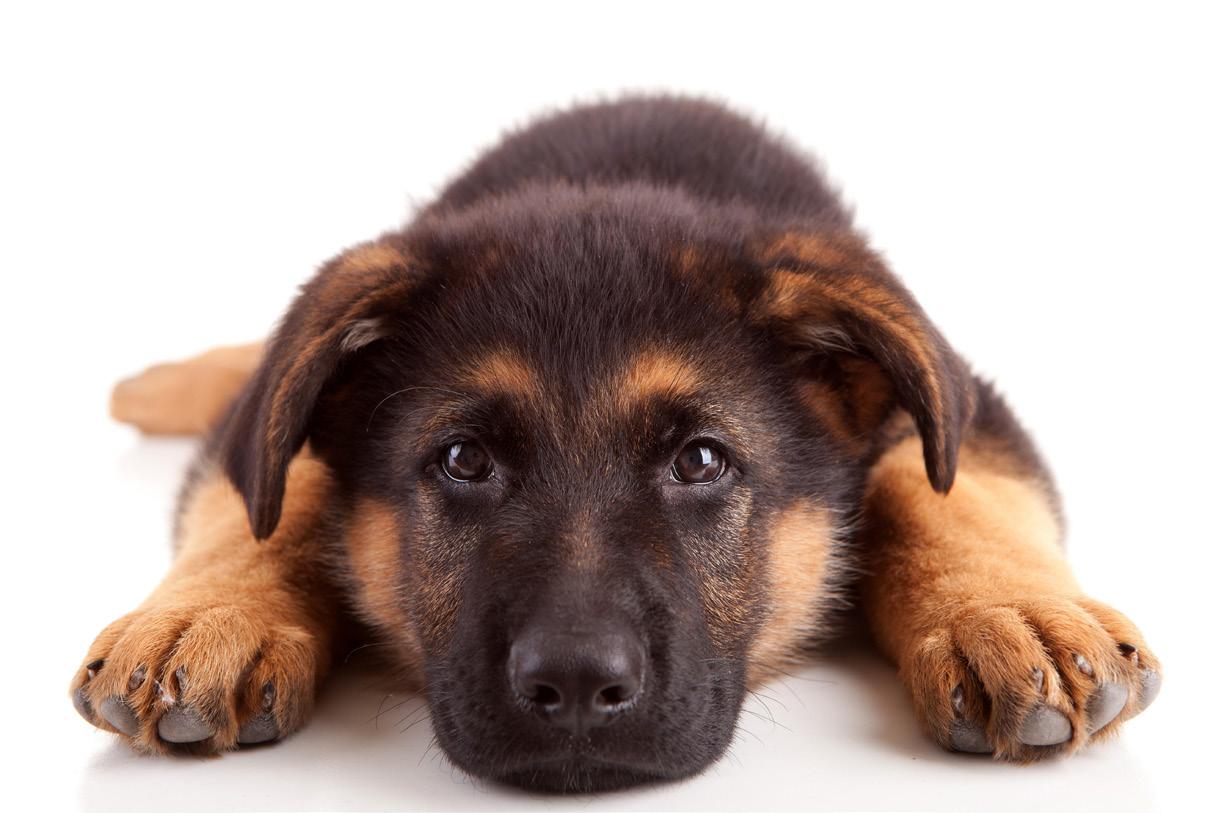
6 Dogs Victoria New Puppy Owner Guide - 22/02/23
Children and puppies
No one in the family is going to be more excited about your new puppy’s arrival than the children in the household. It is important that all interactions between children and your new puppy are supervised. This is both to ensure that the puppy is not over whelmed or accidentally hurt and to ensure that the children understand and are coached in how the puppy should be handled and interacted with.
Children of different ages have differing levels of comprehension, and although a puppy can be a great friend and playmate, it is not uncommon to see children putting themselves and the puppy at risk by their behaviour – pushing, poking and pulling, grabbing and competing for the puppy, running and squealing.
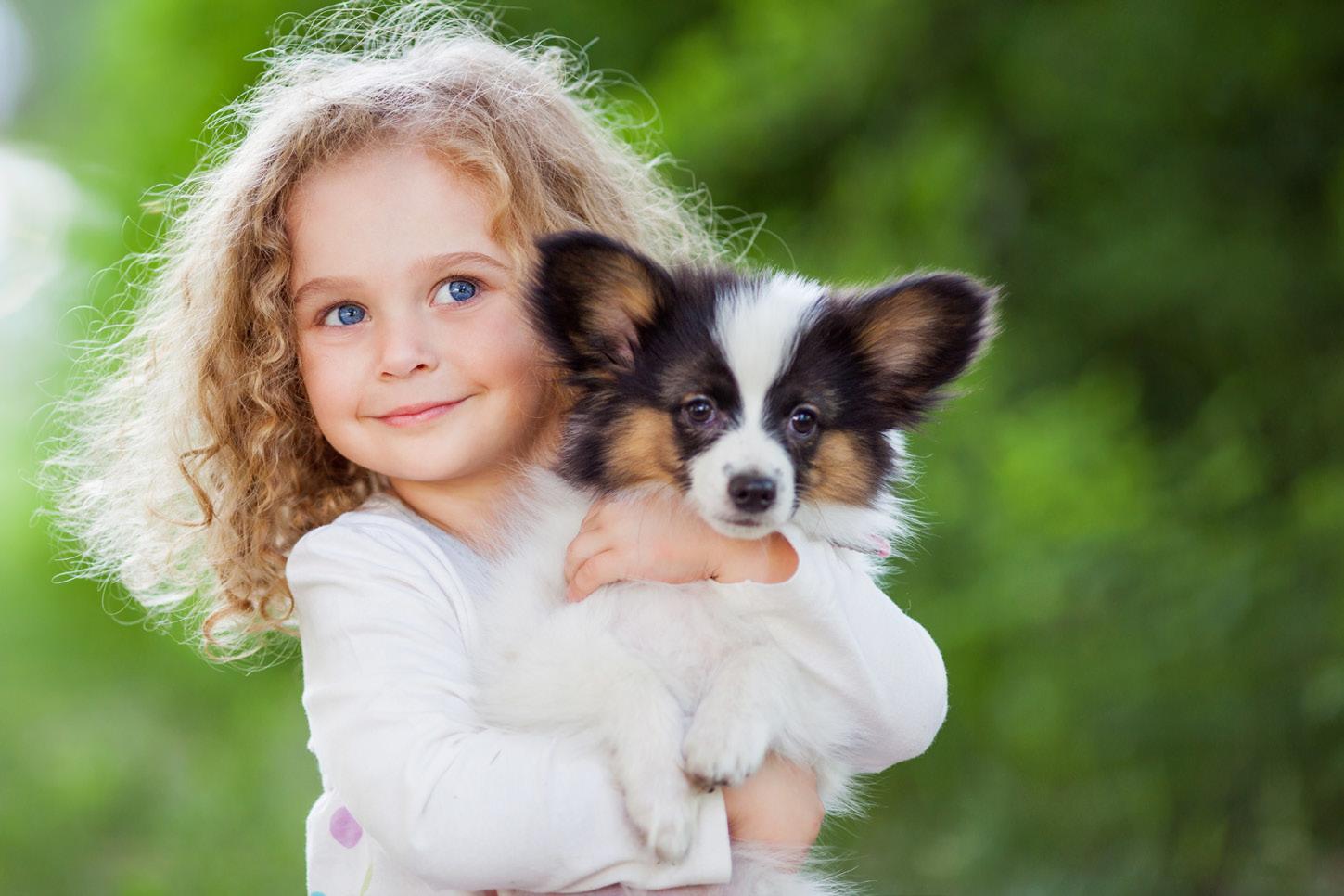
You don’t want the puppy getting hurt or frightened at this young age as this may mean it learns to distrust all children. You also don’t want the puppy getting over excited and unable to calm down.
Children also need to be educated on good hygiene practises when interacting with their puppy. Simple things like making sure they wash their hands after playing with the puppy are important lessons they need to have reinforced every day.
If your children are having friends over, it might be a good time for the puppy to go and have some quiet time in its pen – the kids can go crazy for a bit whilst the puppy gets to enjoy a chew toy in the safety of its bed. This way the association will remain positive, and everyone can play together once things calm down a bit. Remember, not all children have been exposed to animals, so some of your visitors may need extra supervision to make sure everyone goes away safe and happy.
7 Dogs Victoria New Puppy Owner Guide - 22/02/23
Supervision is the key to ensuring both your new puppy and your children stay safe!
First Vet Visit
Preventative health care is super important to prevent disease and keep your puppy healthy. Like humans, very young and very old animals are most at risk of getting ill, so extra care needs to be taken.
Your puppy will have already had a visit to the vet whilst with its breeder. This visit usually takes place at 6-8 weeks of age, and sees every puppy in the litter receive a full health check before being dosed with its first vaccination. At this visit, puppies are also implanted with a microchip (a permanent form of identification) that is used to help identify that puppy throughout its life. Your puppy’s breeder will have also dosed all the puppies in the litter with a worming treatment every two weeks since birth.
You should receive information and certificates from your breeder showing the health treatments that have already completed, and when the next treatments are due. It is most likely that your puppy will need to be wormed a couple of weeks after arriving, and your breeder may have even included a dose of worm tablets in your puppy pack.
Puppies receive their second vaccination dose at 10-12 weeks of age (depending on the vaccination used) so it will be time to book an appointment with your vet not long after your puppy comes home.
Your vet is the best source of reliable health information, and can also provide information on normal puppy behaviour, preventing illness, and what to do if your puppy looks unwell.
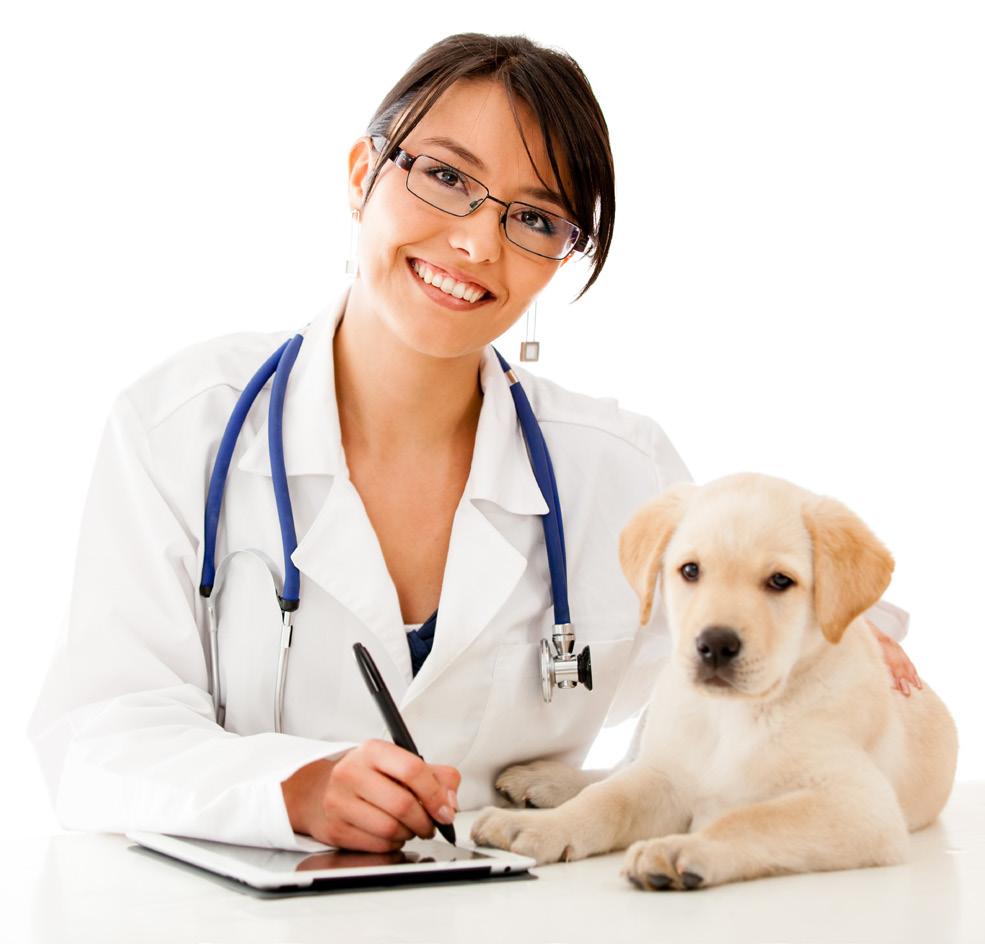
Many vet clinics run puppy schools so now might be a great time to book your puppy a place in the next class.
Most vets will want your puppy to enjoy that first visit so be prepared for treats and cuddles from all of the staff at the clinic. They may also ask you to come at a time when they know things won’t be too busy so your puppy is not overwhelmed by a full waiting room of patients.
Having a great relationship with your vet is the key to ensuring your puppy has a long and healthy life, and that future vet visits are not too traumatic.
8 Dogs Victoria New Puppy Owner Guide - 22/02/23
Most vets will want your puppy to enjoy that first visit so be prepared for treats and cuddles from all of the staff at the clinic.
Your first visit might take a while as your vet will want to answer all of your questions, and advise you on the following:
Vaccination requirements
Your puppy will have received some immunity from its mother’s first milk but this starts to wear off with time, leaving the puppy at risk of catching some nasty diseases. Puppies undergo a course of vaccinations to help them build immunity to a variety of common canine diseases. As an adult your puppy will only require a booster every 1-3 years. It is important that you continue the puppy’s vaccination program to reduce the risk that your puppy will contract an otherwise preventable disease.
All puppies are vaccinated against the three killer dog diseases – Canine Parvovirus, Canine Distemper, and Canine Infectious Hepatitis. Puppies are also vaccinated against both the viral and most common bacterial cause of Canine Cough (often called Kennel Cough). This is called a C5 vaccination (‘C’ for canine and ‘5’ for the five diseases) and is the minimum level of vaccination required if you want to attend training classes with your puppy, or have it board at a kennel whilst you are on holiday.
Depending on where you live, your vet may recommend other vaccinations, and will be happy to discuss the reasons and best timing for these.
Internal and external parasites
This includes intestinal worms, heartworm (which is spread by mosquitoes), ticks and fleas. All of these pesky parasites can cause your pet to become unwell, and some even pose a risk of disease to humans so it is important to know how to control and treat these problems and to minimise the risk of catching something yourself.
Diet
Your puppy is growing every day, and it is vital that the food it is eating meets both its energy and nutritional requirements. There is an old saying that ‘you only get one chance to grow the dog’ and this is particularly important in large and giant breeds, who are growing enormous amounts of bone and muscle in quite a short time. If something is missing from their diet, or they are oversupplemented, it may lead to permanent damage to the puppy’s developing skeleton.
The amount of food your puppy will eat will continue to change through their growth periods and, as they get bigger, and you may also have to change the composition of their diet. Although your breeder will continue to be a great source of advice, your vet can also help with ensuring your pup is in tip top condition by weighing and assessing its body condition at each visit and discussing any diet related questions you might have.
Grooming
At your first vet visit, your vet may also show you how to trim your pup’s nails, check their ears and mouth, and do a basic all over health check at home. This should help set you off on the right foot, and make sure that any changes that might indicate something is wrong are quickly noticed.
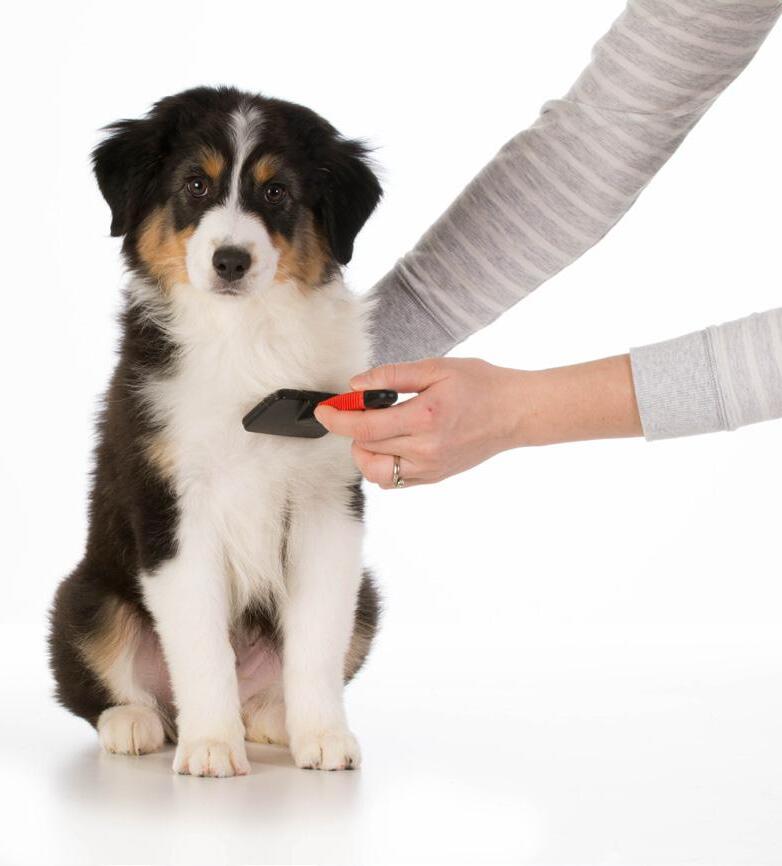
9 Dogs Victoria New Puppy Owner Guide - 22/02/23
Before you visit to the vet, write a list of questions that you might have. There will be a lot to talk about, and having your questions written down means that you won’t forget anything.
So much to learn and teach
Before you have welcomed your new puppy into your home, it will have been passing important learning milestones. Early in your pup’s life, once its eyes and ears have opened, it will have begun learning what is normal in its world. This is the start of a critical learning time called the ‘socialisation period’.
Many people think of socialisation as having puppies interact with each other – meeting dogs of other breeds and having a play – but in fact every experience a puppy has provides information about the world around them.
Socialisation involves exposure to people – people of different ages, people with hats, people with beards, people with high voices, people with deep voices – exposure to different sights and sounds, places, and animals of all kinds. Scientists have shown that there is a window of time in which a young puppy will ‘absorb’ all of these experiences and, as long as they have not been unpleasant, with categorise them as ‘normal’. It is also a time where puppies learn how to interact with others. People, dogs, cats etc., and learn appropriate manners and communication skills.
If they are deprived of these learning opportunities, puppies may not develop the skills to interact well as a mature animal. They will also be more likely to be fearful or at least suspicious of situations, sounds or individuals when they first experience them as an adult. So the goal is to provide plenty of positive experiences early on without overwhelming the puppy.
The flip side of this is that negative experiences at this early age, can lead to life long fears, so care has to be taken to minimise any negative interactions.
Your breeder will have spent lots of time handling each puppy, and tried to give the litter opportunities to experience different things – a ride in the car, visitors, children, other animals, different floor surfaces, different foods, the list of possibilities are endless!
Some breeders will have also started some basic manners training – teaching sit, down, come and given your puppy a basic introduction to walking on a leash. They may have even started crate training and toilet training, and given each puppy short periods of ‘alone time’ away from their mother and siblings.
Now it is up to you to take on the role of puppy educator – making sure you continue what the breeder has started, and provide the learning opportunities into the next learning phase. This way you are setting your new pup up to be a wellrounded, calm and happy adult.
Puppy class
A great place to start is to enrol in a good quality puppy class. Many vet clinics run a puppy class at their clinic, and if they don’t, they will be able to recommend somewhere local to you that runs a good class.
Because the puppies will not be fully vaccinated, puppy classes are usually held indoors, in an area that can be easily disinfected to help minimise the risk of exposure to disease.
Puppy class usually runs for 3-5 weeks, and provides a great opportunity for you to learn all about being a responsible dog owner, how to train your puppy some basic behaviours, and also how to address common problems seen in young puppies as they grow – mouthing, chewing, problems with toilet training etc. There are usually sessions on grooming and health care, diet and exercise, as well as time to answer questions specific to your puppy.
10 Dogs Victoria New Puppy Owner Guide - 22/02/23
Although there is the excitement of other people and puppies, the classes should not be a ‘free for all’. It is really important that every puppy has a good experience and is not bullied or hurt by the rough play of others.
Avoid puppy classes where there are more than 5 or 6 puppies, or where the puppies are off leash the entire time. Although it might not seem as exciting to have the puppies on leash for most of the class, one of the most important things puppies learn at puppy class is to be calm in the presence of other dogs, and to pay attention to you even though there might be a lot going on.
Toilet training
Having a dog that can be in the house and part of the family is the goal of most pet owners and means the dog is not just ‘out in the yard’ all day on its own. This has benefits for both the dog and the family!
Unfortunately, if the dog is not toilet trained, it soon wears out its welcome – so this has to be your number one training priority when your puppy first comes home.
Puppies are naturally clean – they would prefer not to toilet in their sleeping area. This preference develops at about three weeks of age when the puppies first start to toilet without their mother’s stimulation, and when puppies first become able to move around on their own.
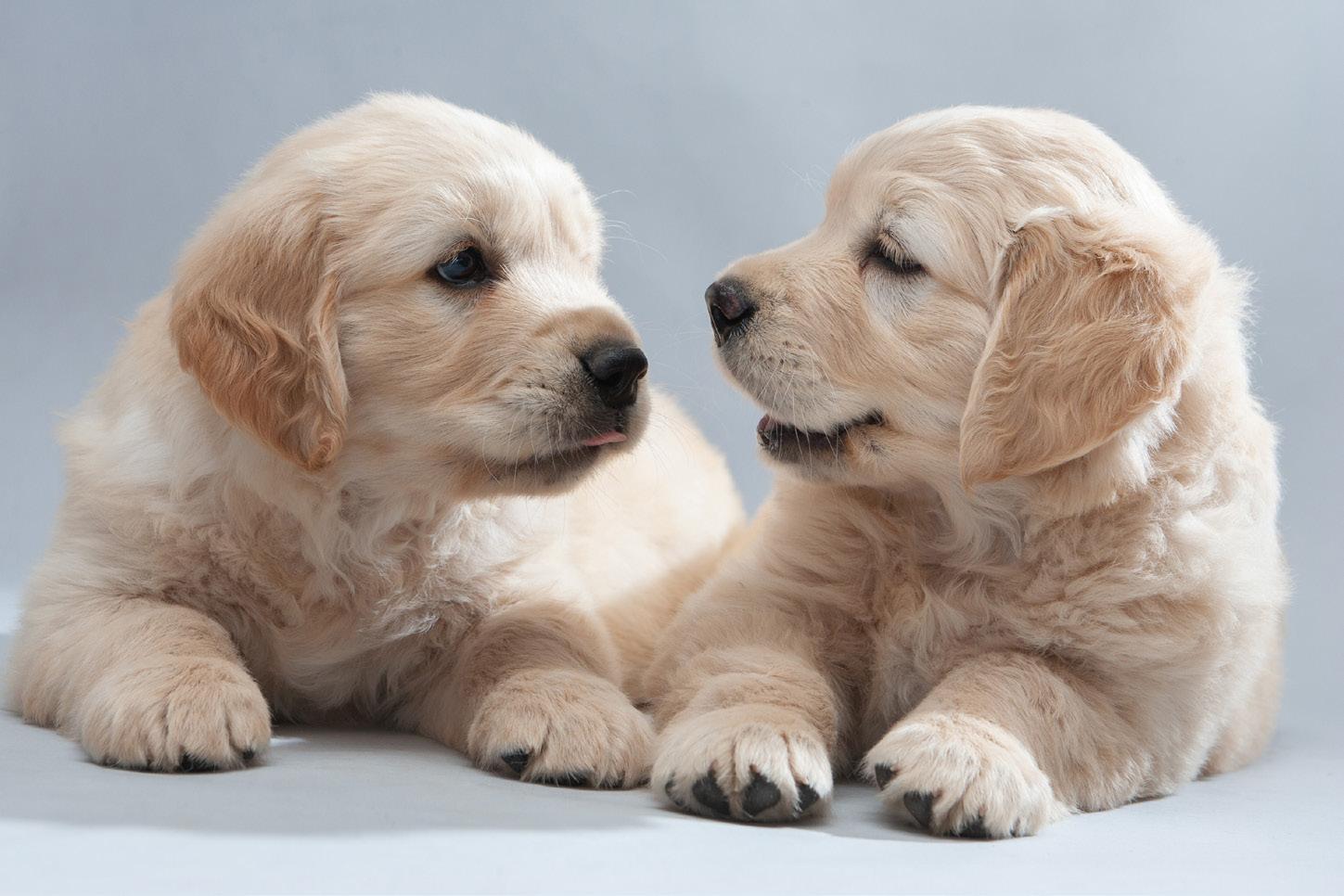
At this very early age they start to develop a ‘substrate preference’ this means they learn what type of surface is for sleeping and what is for toileting so there needs to be a difference between the two.
Good breeders usually have the pups confined to a ‘whelping box’ (their bed) full of soft bedding to keep them warm and safe, and provide a different surface outside the whelping box.
As the puppies get bigger and more active they will have access to outdoor areas as well. Providing the type of surface that you want the puppy to consider a toilet as an adult (usually grass) at this time will mean puppies almost toilet train themselves.
11 Dogs Victoria New Puppy Owner Guide - 22/02/23
When you bring your puppy home, you will need to teach it where you would like it to toilet. Puppies are like young children, they need to toilet often and they cannot hang on for very long.
You want to set your puppy up so that it has as few ‘mistakes’ as possible. This means you need to commit to spending the first few weeks making sure your puppy has every opportunity to get it right.
Just as you would not yell at or punish a young child for not making it to the toilet, if your puppy messes in the house you should never hit it, rub its nose in the mess, or yell at it. Instead you need to think about how you might have prevented the mistake from occurring!
There are a few keys to toilet training a puppy. First is a solid routine – what goes in on time, comes out on time. Second is having the puppy in a pen or crate in the house if you are not directly supervising it. This way there will be no chance of the puppy wandering about the house needing to toilet and using a spot on the rug or behind the couch because they cannot get to their regular toileting area.
Every time your puppy wakes up, after every meal, and after a good play session, you need to pop your puppy on a leash, grab a few treats, and take it to the toileting area.
Trying to achieve this with the puppy off leash means that it could potentially take an unwanted detour, and therefore not make it to the toilet on time.
Although you will be training the puppy to come to its name at this time, the behaviour will not be reliable yet. Puppies are easily distracted, so don’t set your puppy up to fail.
Depending on the age of your puppy, you may also need to schedule a toilet visit during the night as they are not yet able to hang on for long periods of time.
The ability to ‘hold on through the night’ develops as they get older so, for the first few weeks, you might need to set the alarm and get up before the puppy is likely to wake and take them out for a toilet break.
Once you reach the toileting area, you will need to stand with the puppy and wait until the puppy pees or poops (or both!). Once your puppy has success, calmly reinforce the behaviour with a pat and a small treat. Your puppy will quickly learn to go to that spot if it is consistently reinforced.
If your puppy gets to the toileting area and wants to play – just stand calmly and try not to interact too much – this is a ‘business trip’ not play time. Your puppy will quickly learn that play behaviours are not reinforced, and toileting is. You may want to use a word or cue that means ‘go to the toilet’ as this is useful if you want your dog to toilet in an unfamiliar area in the future – such as when you are travelling.
Going to the toileting area and waiting with your puppy until they have toileting success in those first few weeks has to occur - rain, hail or shine, day or night. Nobody likes standing in the rain in the cold and dark waiting for a puppy to pee, but if you simply push the puppy out the door, it is quite possible they will be so focused on getting back inside to be with you, that they will simply bounce around near the door and not go out to the toileting area. This leads to messes right near the door, or worse still, as soon as you let the puppy back inside they will toilet inside the house because they did not empty out whilst unsupervised in the yard – fail….
The key to success with toilet training your puppy is consistency, patience and supervision. If your puppy just never gets to make an error, they will be fairly reliable in no time at all. If your dog is going to be an ‘inside most of the time’ dog, you may need to consider a doggy door so they can get outside when they need, or even teaching your dog to ring a bell at the door to indicate they need to go out.
12 Dogs Victoria New Puppy Owner Guide - 22/02/23
If your puppy does have an ‘accident’, the area needs to be thoroughly cleaned. Some cleaning products that smell great to humans actually break down into by-products that smell like urine to dogs so look for an enzymatic cleaning product to ensure the smell is truly gone.
Handling and grooming
All dogs, regardless of coat type, will need some regular grooming throughout their life and all dogs need to learn to accept gentle handling all over their bodies whilst remaining fairly still. Now is the perfect time to start getting them used to this in a positive way – well before you need to trim their nails, or dose them with a tablet.
Ideally, a couple of times each week you should grab a few treats and dedicate a few minutes to training handling and grooming behaviours. This may include rewarding your puppy for sitting on a grooming table, rewarding it as you gently touch its lips or mouth, rewarding it as you touch or lift a foot, rewarding it as you run a brush gently over its body, rewarding it as you touch its tail, or even rewarding it for calmly allowing you to hold its collar.
These sessions can be quite short – half a dozen treats and the session ends on a positive note.
Your puppy class instructor will most likely include this type of training in your puppy class sessions, so it is a great place to check if you are rewarding the right thing, and to ask any questions you might have.
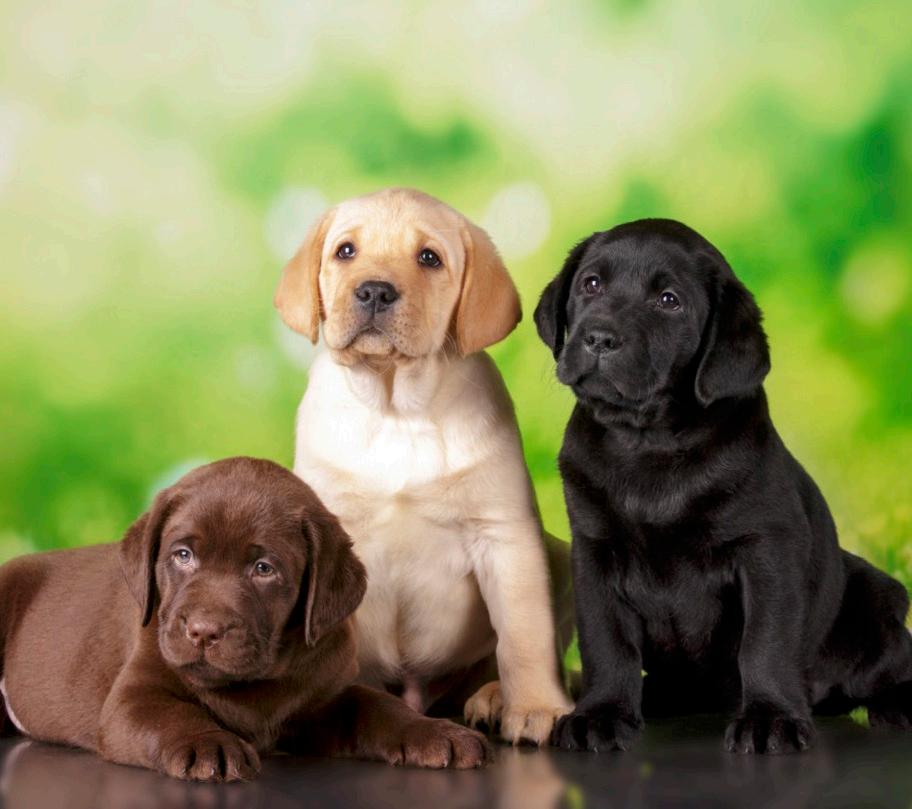
If your breed is one that requires regular trimming, you may also want to have a couple of short trips to the groomers, where your puppy can have a positive experience without the need for a full grooming session, and the groomer can get the puppy used to the sights and sounds of the equipment used.
Appropriate chewing
When your puppy first arrives home, it will most likely still have its puppy teeth. These teeth are like sharp little needles, and puppies use them on everything!
Puppies begin to lose these puppy teeth at around four months of age, and over the next few months all of their puppy teeth will be replaced, so that by around six months of age they have their full set of adult teeth. Like young children who are teething this process can be painful at times, and some puppies may have times where they do not like being handled around the mouth, or may have days when they are a bit reluctant to eat hard foods.
Mouthing and chewing on things (including their litter mates) is perfectly normal and is an important learning process for puppies. It is through feedback about their biting that puppies actually learn ‘bite inhibition’ – or simply how to control their jaws and strength of bite. Puppies who don’t get feedback never really learn this control and are more likely to cause damage or have a ‘hard bite’ as an adult.
Once they have been taken away from their litter mates, puppies tend to redirect this mouthing and biting on whatever is available to them in their new home – this includes people, other pets, toys and chew items. Some puppies are far more ‘mouthy’ than others, so you need to be prepared for this, and have strategies to manage it.
13 Dogs Victoria New Puppy Owner Guide - 22/02/23
First of all, puppies NEED to chew – so make sure that you provide a variety of suitable chew items –some hard, some soft, some big, some small.
Puppies can be encouraged to chew things by smearing them with something yummy – a bit of peanut butter, some wet food, or even Vegemite, depending on what your puppy likes. Small food treats can also be stuffed inside certain types of chew toys requiring the puppy to really engage with the toy to get to the food.
You can speak to your vet about which of the edible food chews might be suitable for your puppy, and how they might be incorporated into your pup’s daily diet.
Remember raw meaty bones and some chew treats can be very fatty or high calorie and may upset your puppy’s tummy if they have too much. Some things marketed as chews can be dangerous for puppies, either due to their size or composition.
Next you need to set some boundaries in regards to mouthing and biting directed at humans.
We want the puppy to have an opportunity to learn that humans are very fragile and biting them is not a desired behaviour. The best way to do this is to provide consistent ‘feedback’ and overtime discourage this behaviour – both by not reinforcing it, and by redirecting the puppy onto a more appropriate item.
Generally, puppies will mouth and bite during play sessions. It is important that everyone in the household understands that play sessions should not get out of hand, and if the puppy starts to mouth and bite, the first strategy is to redirect the behaviour onto a toy (that means you need a suitable toy handy if you are going to play).
If the mouthing escalates, or a nip is particularly hard, then the play session stops immediately – get up, walk away, or give the puppy a time out in its quiet area. The time out does not have to be long – it just sends the puppy a message that mouthing and biting will cause the fun to stop.
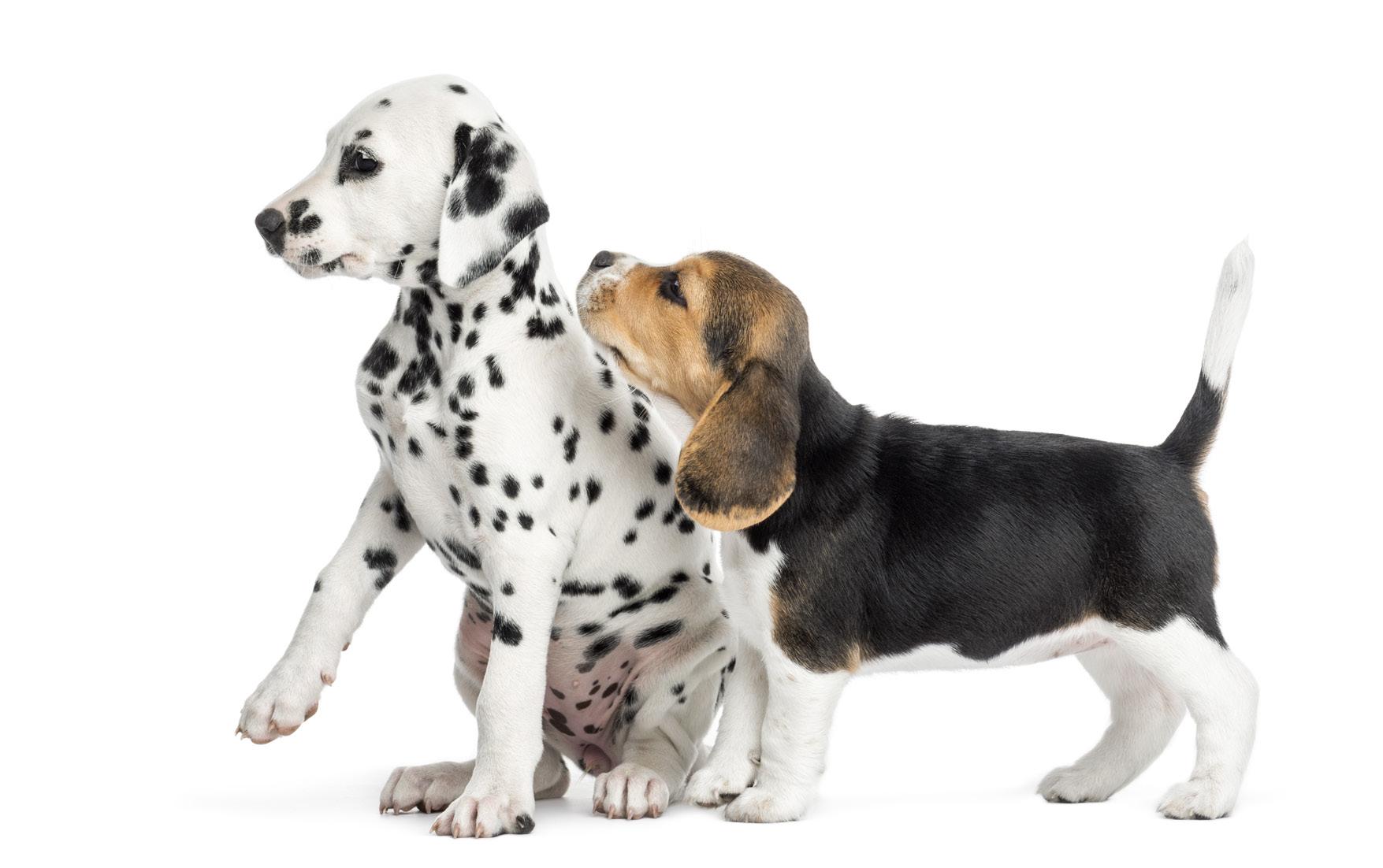
14 Dogs Victoria New Puppy Owner Guide - 22/02/23
This is another behaviour that will most likely be covered during your puppy class. Your puppy class trainer may also give you some other strategies to try if your puppy is particularly persistent, and they can coach you in person.
If your children are the targets of the mouthing behaviour you will need to closely supervise their interactions and step in if required. Unfortunately, children (and especially teenagers) often encourage and reinforce the mouthing and biting by playing games that involve a lot of hands and mouths – roughing the pup up and getting it excited. It is important that you never smack or bite your puppy (it sounds crazy but people try it) for mouthing as this can cause the puppy to become fearful of people, and does little to address a perfectly normal behaviour.
Learning to be alone
There are going to be times that your puppy is going to be alone – maybe during the day when you are at work or school, when you head out to the shops, or when you go out on a weekend.
All puppies need to learn to be alone, even if they usually live with other pets or if you currently are working from home. By gradually getting them used to entertaining themselves whilst you are away, you are setting them up for long term success.
As a group living animal, it is not ‘normal’ for dogs to be totally alone, and for some individuals it can be a very stressful time. When your puppy makes the move to its new home, it will most likely be the first time it has been away from the company of its litter mates and mother.
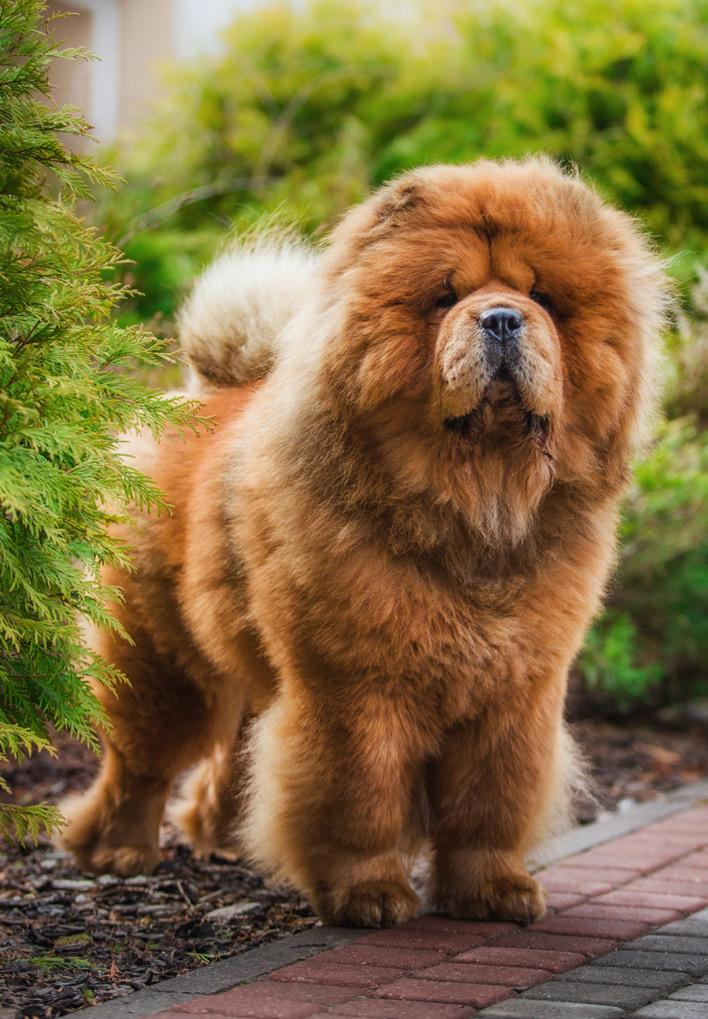
Most people spend a lot of time with their new puppy in the first few days –some even taking time off work to give them the opportunity to help their puppy settle in. But it is not long before things go back to normal, so you need to start ‘alone time’ training from the day your puppy arrives.
The best way to start is to have the puppy spend short periods of time in its pen or crate, or outside in the yard, with people nearby but not in sight. To set the puppy up for success, this is a great time for it to have a chew toy stuffed with some food. That way the puppy is so busy it does not really notice that it is alone, and the people return before it is really finished chewing.
Provided the puppy shows no signs of distress, these sessions can gradually get longer. Remember it is important to keep an eye on the puppy’s early days so that you know when to return – the aim is for the puppy to be calm and entertained and not wait until it realises it is alone and starts crying.
If you have other pets, make sure they get used to time away from each other – maybe take your older dog for a walk on its own and have the puppy stay at home. This means the puppy will not come to depend on the company of the older dog and will have some level of independence. This will be important if the older dog has to spend time at the vets, or later in life, if the older dog passes away and your puppy becomes an ‘only dog’.
15 Dogs Victoria New Puppy Owner Guide - 22/02/23
Getting out and about with your puppy
Once your puppy has had its final puppy vaccination and been cleared by your vet, it is time to get your puppy out and about. This is an important part of the socialisation process, and is a great opportunity to make sure your puppy gets to see the sights and sounds it is likely to experience throughout its life.
Keeping your puppy safe
Before you head out, make sure that your puppy is wearing a correctly fitting collar with some clear identification. Puppies grow so fast that you will end up making a lot of adjustments to their collar (and may need to move to the next sized collar) in the first few months - make sure you check the fit before you leave every time.
Although your puppy is microchipped and this form of identification can be used to help get your puppy home should it become lost, you also want some identification that can be read without a scanner. A collar tag or a collar that has the dog’s name and your phone number on it is ideal.
Remember that collar bells and heavy tags can be quite distressing to young puppies, so try to find a solution that is appropriate to the size of your pup and does not make too much noise.
The dangers of the dog park
Many people head to the local dog park or off-leash area as soon as their puppy is cleared to go out.
The dogs in these areas are often poorly supervised by their owners (who often meet for a chat), and may also be poorly trained (not coming back when called by their owners). Although their owners may think their dogs are friendly, often they are rude, in your face, and unrelenting – all things that may scare your young puppy.
Bigger dogs may frighten your puppy just due to their size – and if the first experience your puppy has of a big dog is that dog running at full speed towards it – they may become very fearful.
Instead, look for places that are fairly quiet, where there are no dogs loose, and where there are plenty of options should you need to change direction or move your puppy to a safer place.
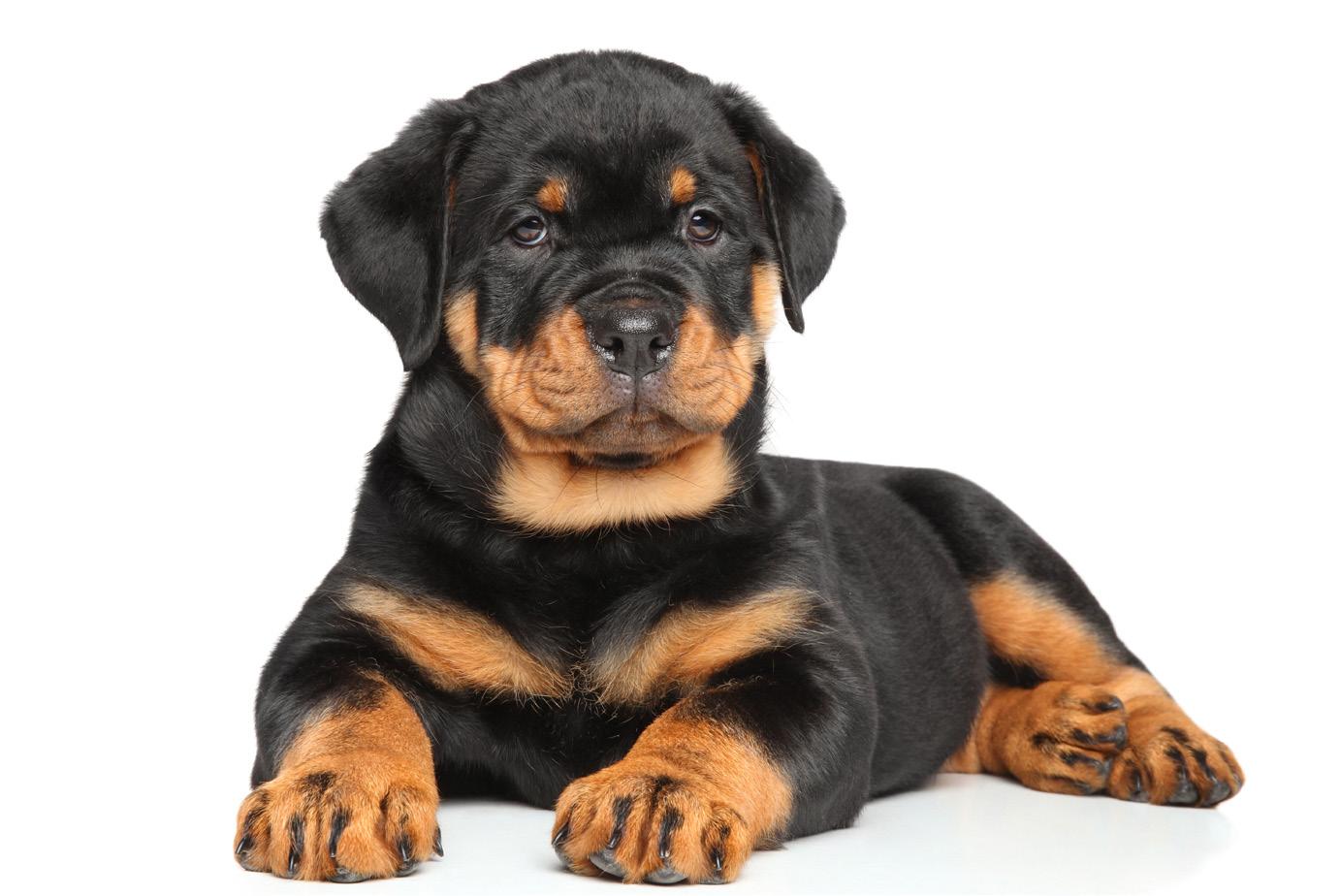
16 Dogs Victoria New
Owner Guide - 22/02/23
Puppy
The dog park sounds like a great idea, and there are always lots of dogs about, but be very careful that your puppy does not have any bad experiences.
Make sure you pack your puppy’s toys and some high value treats so you can reward your puppy for calm behaviour, nice leash manners, and paying attention to you even when there are distractions.
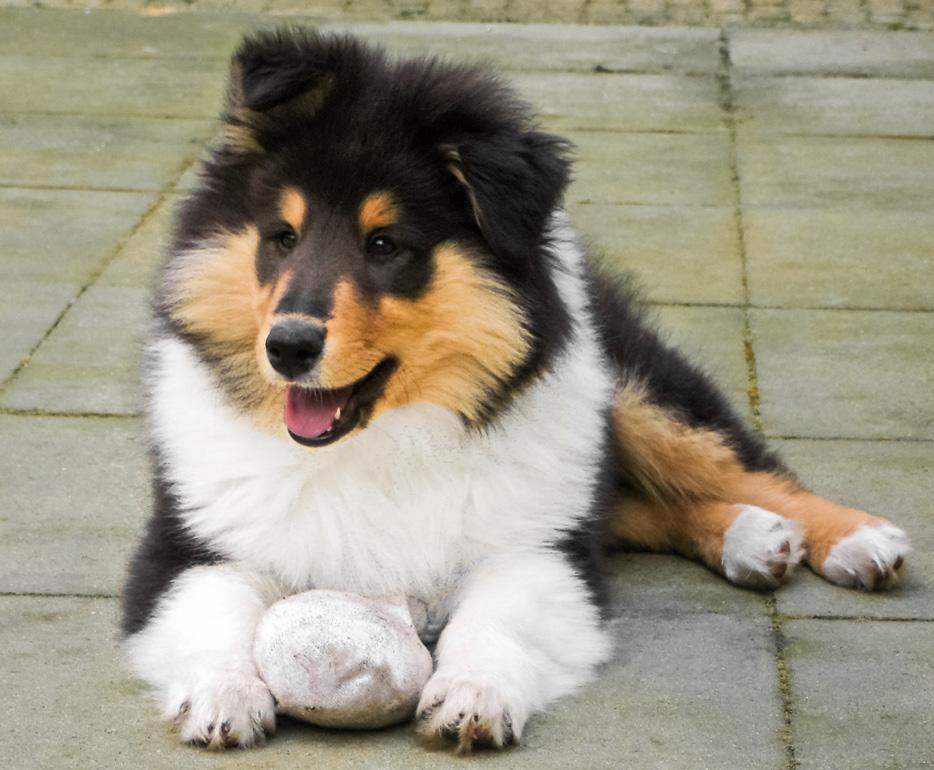
Puppies are learning all the time so these walks are more about the experiences than the exercise. Let your puppy sniff, stop for a game, practice some recalls, and maybe even ask people who stop to have a chat or admire your new puppy to give your pup a treat (as long as it is not jumping all over them).
By this age, your puppy will have finished puppy class, and it is a good idea to continue into a juvenile or beginner class at your local obedience or training club. Ask your puppy class instructor for a recommendation or head to the Dogs Victoria website to find a club near you.
Appropriate exercise
Puppies need exercise, but they are still growing their muscles and skeleton. Studies have shown that too much heavy exercise at an early age can cause long term damage to the puppy’s bones and joints. For this reason, it is important not to over exercise your puppy until it reaches physical maturity (depending on the breed this could be 1218 months of age).
Until this time, your puppy can go for a short walk, play with other friendly dogs and climb and jump small obstacles it encounters. It should not be doing any hard or fast exercise (no jogging or running with you, no running beside a bike, no long distance hikes), and should not be encouraged or allowed to jump larger heights where the landing may stress developing bones and joints.
If you have a high energy breed, look to tiring it out in other ways – mental stimulation with training and concentration, or scent type activities are VERY tiring and may be the answer to burning off some energy safely.
Travelling with your puppy
If you plan to travel with your dog, then now is the time to get your puppy used to getting in the car and going places. By law, all dogs need to be safely restrained within a vehicle whilst they travel so you will have to introduce your puppy to wearing an appropriate restraint or harness, or have it get used to travelling in its crate.
Not all dogs are great travellers, and some get car sick. If your pup is having trouble with nausea in the car there are a variety of strategies you might be able to try. Puppies often become less concerned if the trips are short and result in a positive event –like a walk at the park, or a visit with friends. Some do better if they can see out of the windows, others do better if they have no view at all.
Chances are that you travelled by car to your puppy class or to your vet visits, so your puppy will have a number of shorter trips already under their belt, and you can work towards longer trips over time.
If you are having problems, speak to your vet about medications that may help.
17 Dogs Victoria New Puppy Owner Guide - 22/02/23
Holidays and your puppy
These days there are an increasing number of people who include their pets in their holidays. Maybe the dog can join the family camping trip, or stay overnight at a pet friendly motel or holiday house.
If you plan to do this, you need to teach your pup the skills it will need to make the holiday fun for everyone. Teaching your dog to travel and sleep calmly in a crate or pen is a great thing to teach all dogs.
Crate training has a host of benefits – it helps with toilet training, it helps with training calm behaviour, it helps with travel – in your vehicle or someone else’s - and it means the dog has a familiar place to rest even when away from home. This in turn reduces the stress and novelty of an unfamiliar place because the crate is the same as at home.
If you cannot take your pet with you on holiday, then you will need to make other arrangements well ahead of time – you may choose to have a pet-sitter care for your animals, or may choose the safety and security of a boarding kennel.
If you plan to board your dog at any stage during its life, you can certainly prepare it for this by booking it in for a day visit or single night stay at a time when the boarding kennel is not too busy. This way your puppy can become accustomed to a night away in a strange environment, well before you have to board them there for a longer period.
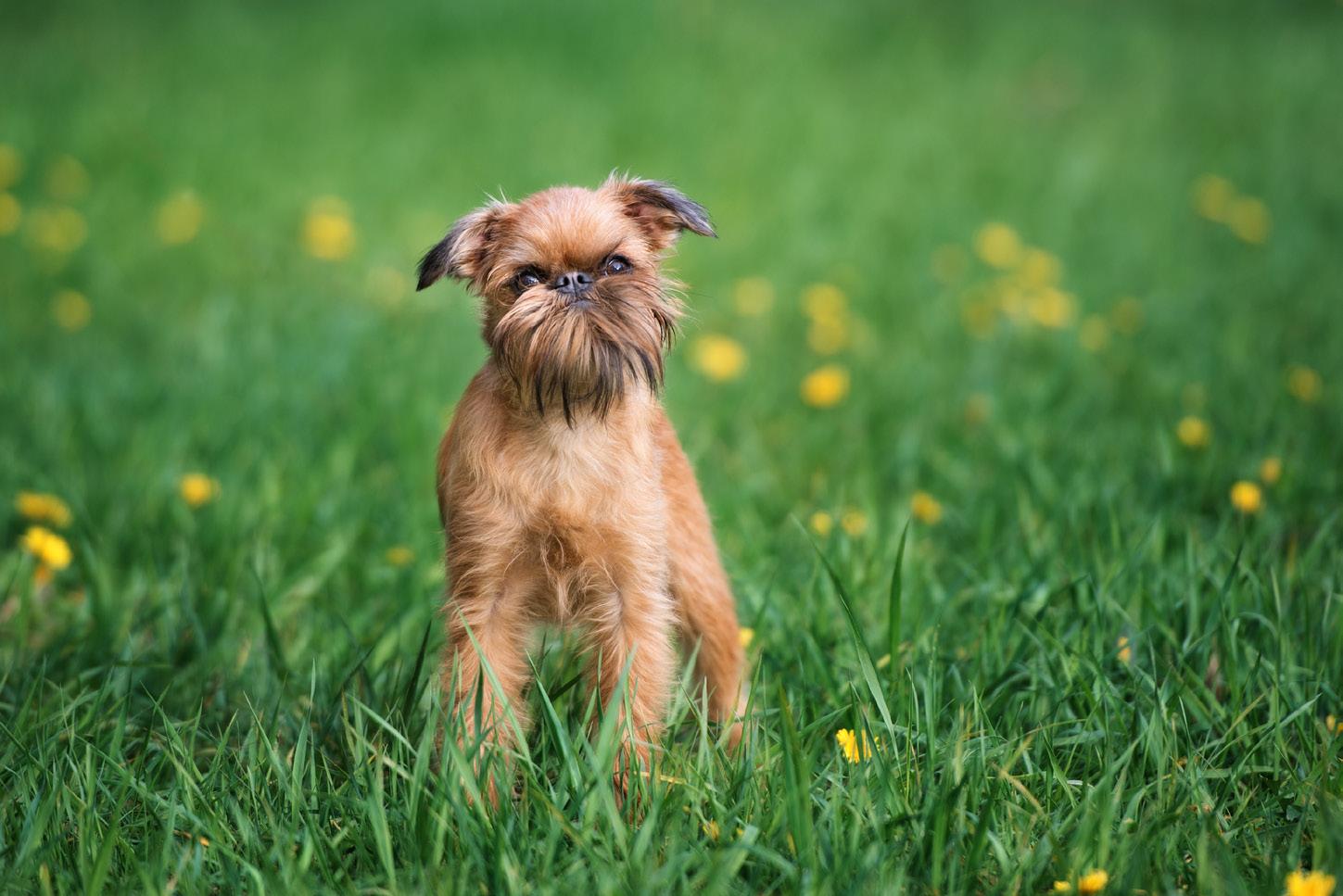
18
Victoria New
Owner Guide - 22/02/23
Dogs
Puppy
Responsible pet ownership - the law and you
What is responsible dog ownership?
Responsible Dog Ownership is about ensuring that dog ownership within the community does not have an adverse effect on the community as a whole.
Every single person who keeps a dog as a pet or companion has a responsibility to make sure their animal does not become a nuisance or impact the health and wellbeing of others.
Responsible pet ownership covers everything from making sure you provide your dog correct care –water, shade, nutrition, veterinary care and adequate mental and physical stimulation – to ensuring that your dog does not cause a nuisance by straying, barking or posing a threat to public safety.
Part of responsible dog ownership also relates to ensuring that you follow the laws relating to dogs –registering your pet with the council, keeping it on leash when off your property, and picking up after your dog when out on a walk.
Registering your puppy with your local council
It is a requirement that all dogs are registered with the local council by the time they reach 12 weeks of age.
Council dog and cat registration becomes due every April, and you will pay a fee each year to keep your dog registered. Most councils issue a collar tag that your dog needs to wear when off your property - it will have your dog’s registration number on it.
Your council will have a limit on the number of pets you can have, along with a variety of requirements for dog or cat owners within their municipality. They will have designated areas where dogs are prohibited and areas where dogs are allowed off leash. Your local council will have details of all of their requirements on their website, so make sure you are familiar with the rules in your area.
Microchip identification
Every pup in Victoria must be microchipped prior to sale, so your breeder will have had this done at your pup’s first vet visit. The microchip is the size of a grain of rice, and is implanted under the skin in between your dog’s shoulder blades. The chip contains a large 15 digit number that is unique to your dog, and the chip can only be read with a scanner. This number is then kept on a government licensed database along with contact details of the owner, breeder and the person who implanted the chip.
Your breeder will have given you a microchip transfer form when you collected your puppy, or will have lodged it on your behalf, but it is up to you to ensure that your details that are kept on the central database are updated throughout your dog’s life. If your phone number or address changes, make sure to let them know. There is nothing more frustrating than having scanned a chip and finding that the contact details paired with it are no longer valid when you are trying to get a much loved dog back home.
Minimum standards of care
The Victorian Government has a ‘Code of Practice for the Private Keeping of Dogs’
This is a document that outlines the community’s expectations in regard to minimum standards of care and housing for pet dogs. It is quite an informative document, and a great place to get started if you have a question about what is expected of you.
You can access an up to date copy of this Code from the Victorian Government website by simply doing a Google search.
19 Dogs Victoria New Puppy Owner Guide - 22/02/23
It is a requirement that all dogs are registered with their local council by the time they reach 12 weeks of age.
2 - Activities for you and your dog Breed clubs
Breed clubs are a great place to start if you are looking for information and activities specific to your breed, or looking to meet other people who share your love of the breed.
You might have already come across the club representing your breed in your search for information prior to deciding that this was the breed for you.
There is a breed club for nearly every breed. These clubs are formed and run by breeders and enthusiasts. You may find if you have a ‘rarer breed’ that there is not a breed club specific to your breed in Victoria, but in most cases there will be a multibreed club that includes your breed – such as the ‘Hound Club’ which caters for all hound breeds.
Breed club websites are often an amazing source of information about the breed. There will be information about the breed’s history and development, the breed standard (the written blueprint for the perfect specimen of the breed), as well as information on living with the breed.
If there are any identified health problems in the breed, there will be information about the signs and symptoms of the condition and information on testing procedures (if they are available) to help detect dogs that might become affected, and to prevent breeding animals who may be at higher risk of passing the condition on.
Some breed clubs even host ‘open’ health databases, where you can look up health results of animals in your dog’s pedigree, or look for results for animals you may be considering for breeding purposes.
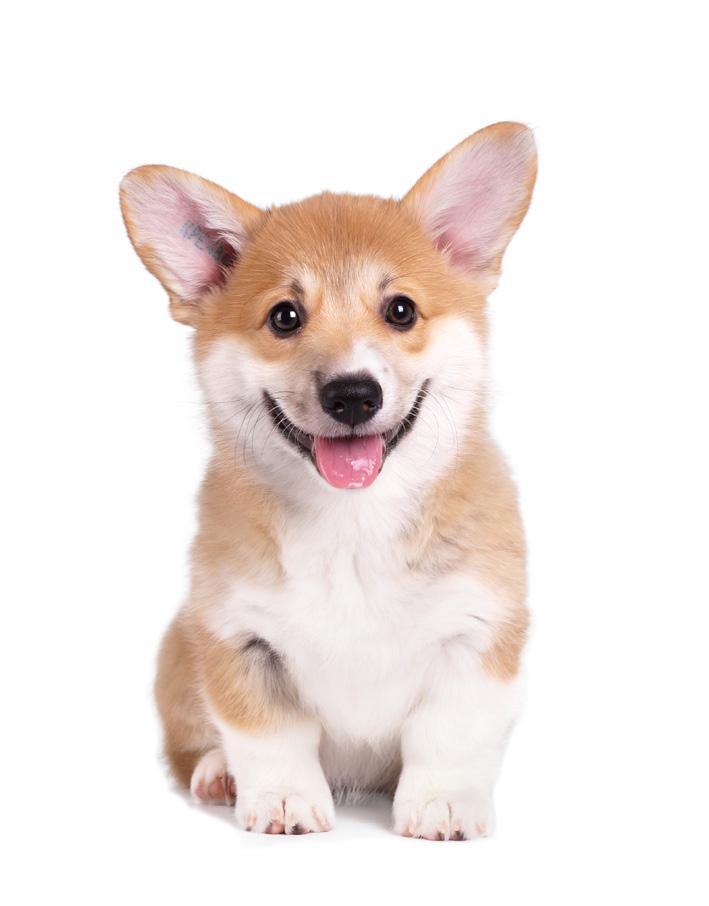
Most breed clubs will produce a newsletter (either hard copy or electronic) and many have Facebook pages or other social media accounts that can help disseminate information, and bring together people who have an interest in the breed.
As a new owner, membership of your breed club gives you access to a wealth of knowledge and information and, aside from your breeder, may be the best source of answers to your questions in the first few months with your new puppy.
Your breeder can help you out with information about the relevant breed club, and many clubs offer a ‘breeder joined’ membership that offers a reduced first year rate for breeders who join up their new puppy owners – so your breeder may have already signed you up.
20 Dogs Victoria New Puppy Owner Guide - 22/02/23
Breed club events
Breed clubs will often host a ‘Specialty show’ each year to showcase the breed and its upcoming youngsters. Winning at the breed’s specialty show is highly prestigious and gives breeders a chance to show case their breeding programs.
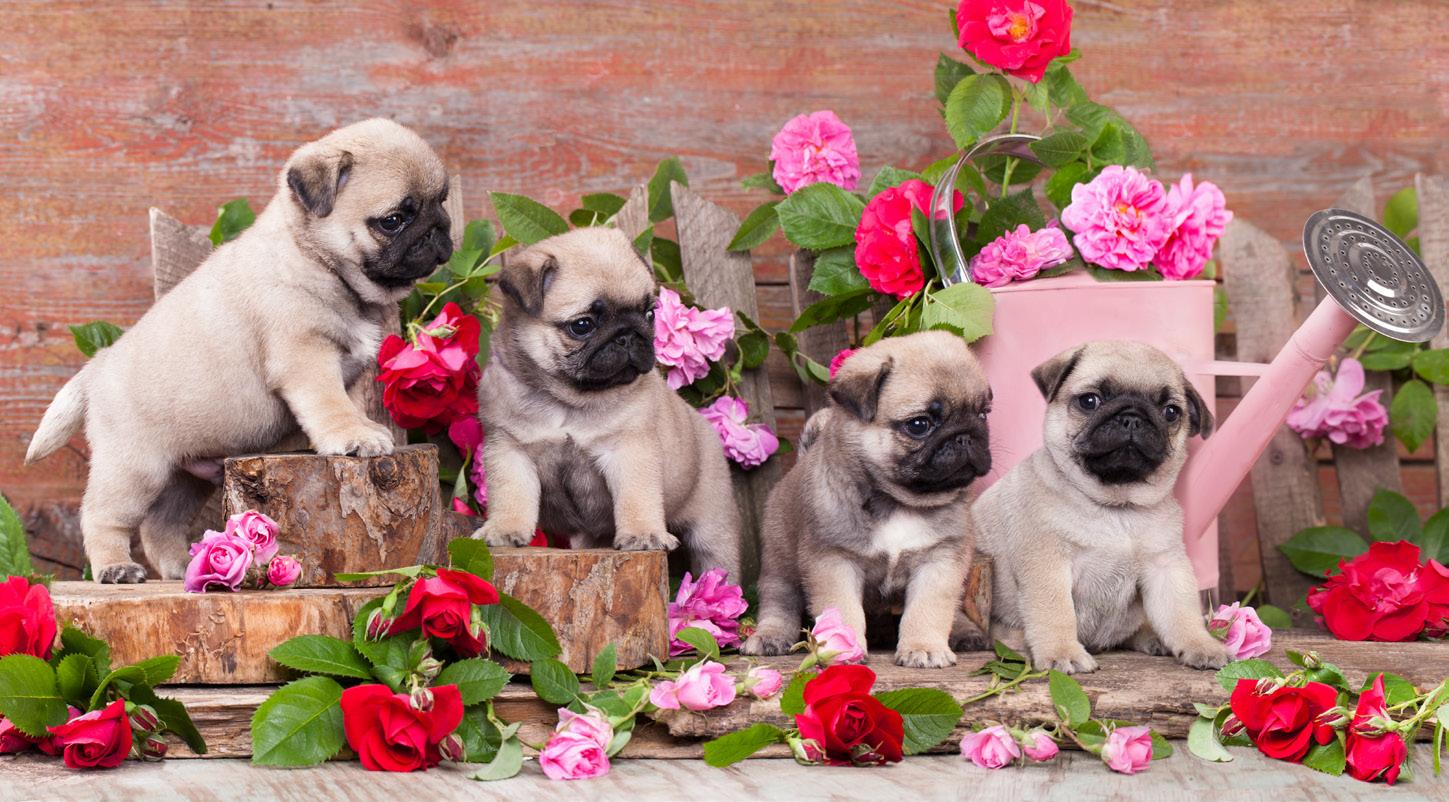
The club may also run ‘Open Shows’ - which are held to assist new exhibitors get started in conformation showing, and provide an opportunity for trainee judges to get experience judging the breed.
Open shows are less competitive than specialty shows with champion animals judged separately from those who are not yet champions.
Both specialty and open shows may offer classes specifically for new exhibitors, desexed animals and junior handlers. There may also be ‘Property Classes’ such as ‘Best Headed’, ‘Best Gaited’ or ‘Best Colour’. These classes allow new exhibitors to dip their toe into the world of showing without it being too overwhelming.
Many breed clubs also offer a variety of events throughout the year that are focused on those members who may not be interested in shows and showing.
Depending on the club there may be member social events, breed walks, fun days and educational events. These may be simply a chance to meet other owners and their dogs, but may also provide an opportunity to learn about living with the breed –such as grooming demonstrations, training advice, or the opportunity to try one of the many dog sports.
These breed club events might give you a chance to see your dog’s natural instinct in herding or field work, or the chance to watch dogs of your breed demonstrate their prowess in scent work, tracking, obedience, retrieving or earth dog work. You might have a chance to try out over an agility course, or to chase a lure safely over a simple straight course.
Another valuable service offered by breed clubs may include breed ‘health clearance’ events which provide an opportunity for members to have their animals undergo a breed specific test at a reduced cost. This includes DNA testing events where an approved/qualified sample collector is present at a club event to take samples, ‘heart’ clinics or ‘eye’ clinics where a specialist veterinarian conducts testing of potential breeding stock and individuals (often at a discounted or subsidised rate).
A full list of affiliate breed specific and group clubs (such as the Hound Club, Working Dog Club, Gundog Club etc.) is listed on the Dogs Victoria website www.dogsvictoria.org.au
21 Dogs Victoria New Puppy Owner Guide - 22/02/23
Basic training for your puppy
Teaching basic manners, the beginnings of a recall (coming when called) as well as coaching good leash manners will make exercising your pet, and your day to day interactions at home far more enjoyable for both of you.
Whilst this may start with a puppy class either at your local vet or in a safe environment with a local trainer, you may want to continue on to further training, particularly with your ‘adolescent’ dog.
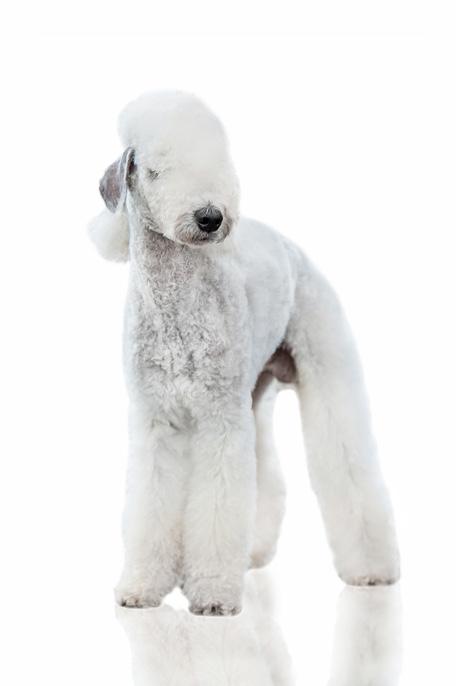
It has been shown that the dogs that are at the highest risk of relinquishment at shelters are those that have had no training whatsoever – a sad fact really - as the commitment to add a dog to your life should come with the knowledge that there will be a definite requirement for some form of training and education for your new family member.
Training is really a life long commitment, although the lion’s share of the learning will occur in the first few years of your dog’s life.
Starting early and using positive, reward based training methods will see you both develop some basic skills in an enjoyable, low stress way and help address any problems early, before things get out of hand.
You may also find yourself having some basic problems with your growing pup – it is perfectly normal for youngsters to chew and mouth all manner of items, for terrier breeds to dig in your garden, and for sighthounds to take off at full speed when off the leash.
You may need some help with strategies to help channel that behaviour more appropriately, teach your dog an alternate activity, or how to manage them in a way that reduces the problem.
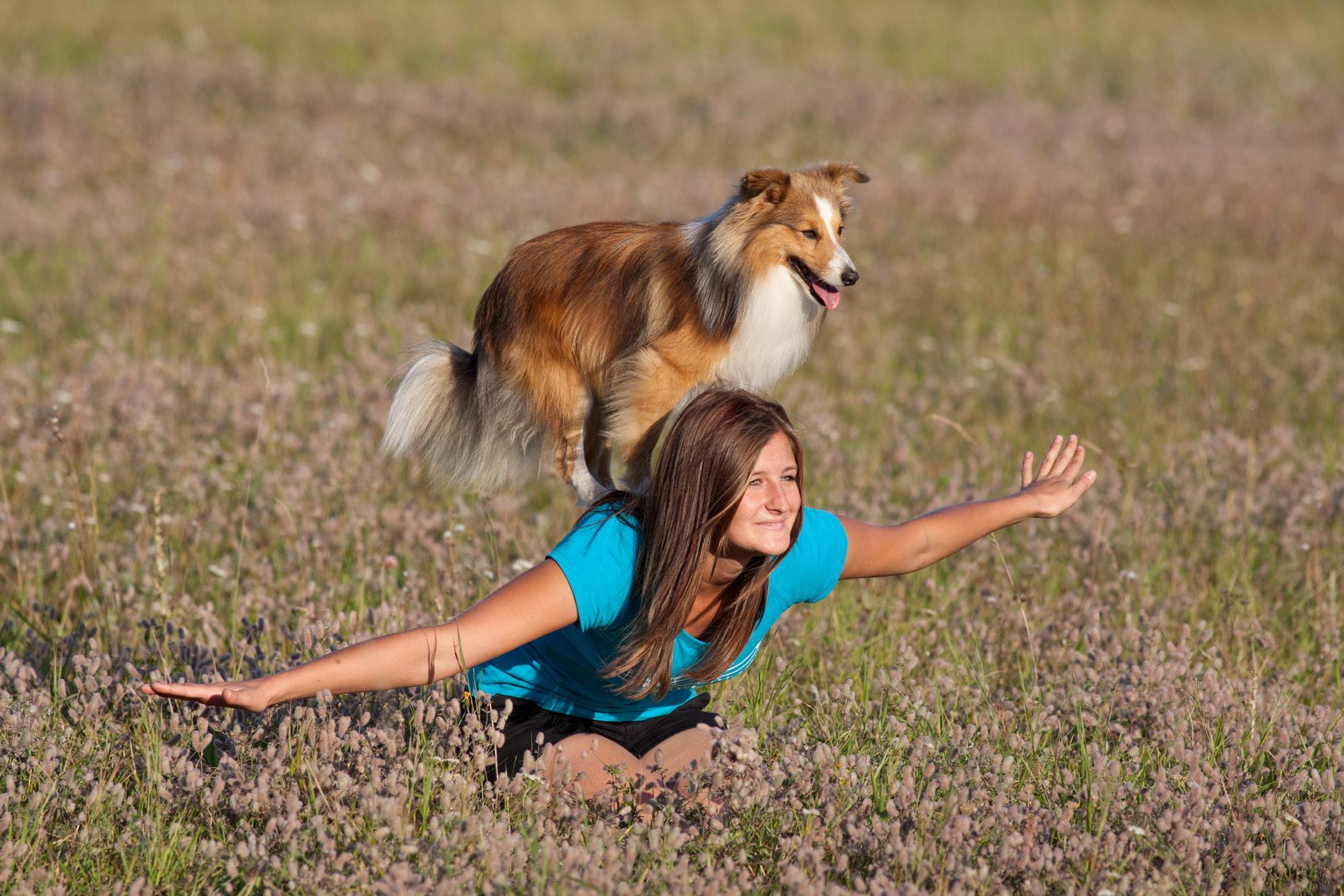
But where can you go to get some good advice, and to learn how to train your dog the things it needs to know?
Dogs Victoria affiliated obedience/training clubs offer inexpensive, community based training programs for ALL dogs (large and small, purebred and mixed breed) where you can get advice from experienced trainers and learn how to train your dog all the basic behaviours that will help you both at home and out on walks.
These clubs offer everything from basic pet dog ‘manners’ classes through to competition level obedience as well as activity specific training for the various dog sports. Some even offer puppy classes. Classes usually run every week, and they are a great opportunity to get your dog used to listening to you with the excitement of other dogs around.
You can find a class/club near you by visiting the Dogs Victoria website.
Please note: some breed clubs also offer training classes so check with them too.
22 Dogs Victoria New Puppy Owner Guide - 22/02/23
All dogs require some level of training to ensure they are good citizens within the community and are pleasant to live with at home.
Dog sports and activities
If you are looking for something else to do with your new family member, there are a huge number for activities you can do with your dog aside from visiting the local dog park or going for a walk.
Some of these activities provide an outlet for your dog’s natural instincts, others provide exercise and mental stimulation which can be much needed in young, active dogs.

Every breed of dog has been developed over time for certain abilities or traits. Many were bred to help find and catch food to put on the table – either using their amazing powers of scent or by being able to catch and retrieve game.
Others were put to use guarding or moving stock, pulling sleds, or killing vermin. Some breeds were simply bred to be companions. No matter what your dog was bred to do, there is probably a dog sport that utilises this skill.
Dogs Victoria hosts many different dog sports and activities through their affiliated clubs. Many people love to get involved to enjoy the social aspects, to learn some new skills and to enjoy quality time with their dog.
If you really enjoy the activity, and your dog shows a flair for it, you can go on to compete if you choose, earning titles and ribbons as you go.
23
Owner Guide - 22/02/23
Dogs Victoria New Puppy
Striving to be the best Conformation showing and junior handlers
Conformation showing
Many people are very proud of their dogs, and enjoy the opportunity to have their animals assessed against the breed standard (the written blue print for the perfect dog) by trained and experienced judges.
Judges have to undergo years of training to be granted a licence to judge each breed. They have to learn canine anatomy, rules, regulations and ring craft, as well as learning the specific traits that make each breed unique before having their knowledge tested by more experienced judges to gain a licence.
The largest shows held in Victoria are the Melbourne Royal Show (where breeds are judged over several days) and the Melbourne Cup Carnival weekend that hosts the largest one day show in the southern hemisphere – Sunbury Canine Club – as well as a host of supporting breed and group shows.
Even if you are not interesting in showing your dog or your dog is not suitable for showing, attending dog shows is a great way to meet breeders and owners of your breed, and to see your breed compete.
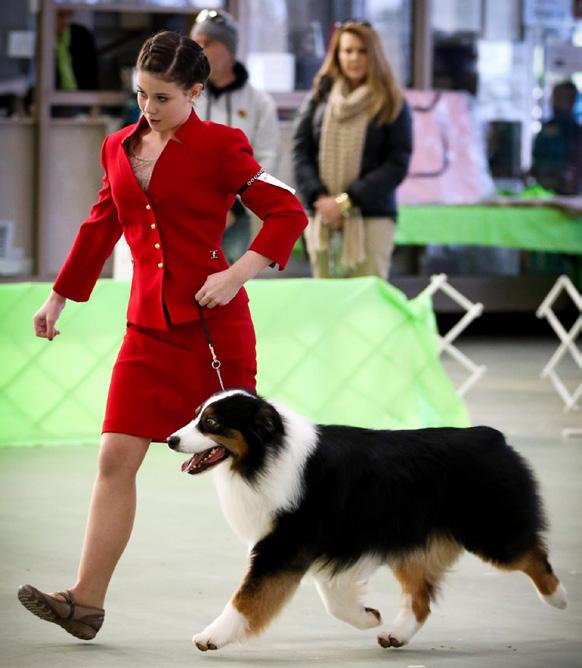
Dogs Victoria posts a show calendar on their website, and in the ‘gazette’ part of their magazine.
If you are interested in attending a specific show, you will need to read the show ‘schedule’. The show schedule list the specific details of the show such as the date, start time, judges, location, etc.
There are single breed or single group shows, and a variety of all breed shows. From the dog section of small agricultural shows in rural cities, to bigger city shows (which are usually held at Dogs Victoria’s two metropolitan exhibition centres –KCC Park in Skye and Bulla Exhibition Centre near Melbourne’s Tullamarine Airport).
Dog shows are generally judged alphabetically –so if your breed starts with the letters A, B or C, the breed will be judged close to the starting time advertised. If your breed starts with a letter late in the alphabet – such as Whippets or Tenterfield Terriers - it will be one of the last breeds to be judged, so you need to make sure you arrive in time.
Showing can be very competitive, and it is best to start by speaking to your breeder if you think you would like to show your dog. They should be able to give you an honest opinion of your dog, and suggest how you can get started.
You may want to have some ‘handling lessons’ prior to your first show so that you and your dog know what to do on the day.
Dogs Victoria run a number of open shows every year where new exhibitors can come to learn more about showing in a friendly, encouraging environment. There are information sessions at the start of the day to help you understand the process, and mentors on site to help you get it right.
24
Victoria New
Owner Guide - 22/02/23
Dogs
Puppy
Dog shows are a great social event, and shows are held all over the state – so there will be one near you.
Conformation showing is a ‘knock out’ type event where one dog is left at the end of the show having been judged as the best exhibit in show.
Competition starts within your breed, with the males and females judged separately in age classes. The winner of each class progresses to the next round, then the best of each sex is selected from these winners. The best male and female then compete for best of breed.
At a championship show, points towards the title of champion are awarded to the best male and female on the day, and the number of points awarded is based on how many dogs these winners have had to beat on the day.
Each breed winner then progresses to the group round where the best exhibit in each group is selected – there are seven different groups based on what the breeds were originally bred to do.
Finally, the seven group winners compete for the highly coveted best in show.
To participate in conformation shows, your dog needs to be registered on the main register (blue papers) and be entire (not desexed).
If you have limited register (Orange) papers you will need to speak to your breeder about having your dog upgraded to the main register.
If your dog has been desexed there are showing classes for neutered animals, but you will have to have your dog moved to the neuter register to compete.
Junior handlers
If you have children aged between 7 and 19 years of age, they can also get involved at the dog show in the junior handler competition.
Junior handler competitions are either held at the commencement of a show or during the lunch break, and are split into age groups, starting with tiny tots.
Junior
handler competitions concentrate on the handler skill, rather than the quality of the dog.
Having a rapport with your dog, handling it gently but proficiently, and making sure the dog is having fun are priorities. Juniors need to also showcase their ring craft – listening to the judge’s instructions and presenting their dog to its best advantage.
There is a manual outlining all of the skills required for junior handlers on the Dogs Australia website, and some clubs host junior handler training classes to encourage youngsters to get involved.
If your dog is not suited to a junior handlers competition (maybe the breed is a bit large or powerful) speak to your breeder about finding a dog that your child can work with, train and present.
Many breeders and exhibitors are happy to coach juniors and lend them a suitable dog so they can have a go.
If you want to find out more about junior handlers, the best place to start is by contacting the Junior Kennel Club. The Junior Kennel Club is actually run by juniors, and is responsible for hosting the state Junior Handler Finals at their show in July each year.
The winner of the state final represents Victoria at the national junior handler final, and the national winner represents Australia in the junior handler competition at Crufts in the UK.
25 Dogs Victoria New Puppy Owner Guide - 22/02/23
Taking your training further
Agility, obedience, tricks and dances with dogs
Agility
Agility is a fast, exciting, fun activity for you and your dog. Agility involves handlers directing their dogs around an obstacle course in an attempt to negotiate the obstacles safely and correctly whilst trying to ‘beat the clock’. The obstacles comprise various types of jumps, ramps, elevated walks, poles that the dogs have to weave through, different types of tunnels and a see-saw.
Agility requires you and your dog to develop as a team, learning how to negotiate each different obstacle, and then joining them into simple sequences before taking on longer courses.
Whilst running and jumping is fun for the dog, agility training helps to not only increase the bond between you, but also involves training your dog to watch you, and follow your lead, even when it is very excited. It also enables you to provide an opportunity to run and jump and get rid of some of that energy in a way that can be much more interesting and exciting than simply taking your dog for a walk.
All breeds of dog, on all Dogs Australia registers (main, limited, neuter and associate), can compete in agility provided they are physically fit and healthy.
Agility is not only about speed, it is about accuracy – so even if your dog seems slow and methodical when compared to others, this may actually work in your favour. If you choose to progress to competition, your dog will compete in a class based on its height at shoulder. Competition courses become more complex and difficult to manoeuvre as the level of competition gets higher. Dogs Victoria has a number of affiliated clubs who simply specialise in training for agility, but some of the affiliate obedience and training clubs also offer agility as an activity.
If you would like to get involved in agility, or even go and watch an agility event, you can visit the Dogs Victoria website www.dogsvictoria.org.au to find out more, locate a club near you, or find an agility event close by.

26 Dogs Victoria New Puppy Owner Guide - 22/02/23
Obedience and rally
As we have discussed, all dogs need some training. Whether it is learning how to walk on the leash without pulling, how to come when called, or even just to go and lay calmly on their bed when asked.
Training your dog some basic manners makes them far more pleasant to live with, and can make taking them for a walk far more enjoyable.
But if you and your dog really enjoy the training, you can work towards competition obedience. This is where you and your dog complete set exercises, and your teamwork and precision is graded by a judge. Your local obedience club will often run fun days or mock trials so you can see what is involved, or you can attend a competition (called a trial) and see what happens.
Competition obedience, like all of the dog sports, has various levels with exercises becoming more difficult and complex as you progress, and as you progress, more of the exercises will be done off the leash. Competition is broken up into two streams –rally and traditional obedience.
Rally Obedience is a little more informal and light-hearted than the more traditional obedience competition with handlers allowed to talk to, encourage and praise their dog during the test.
It is a great place to start, especially if you get a bit nervous. Some of the exercises are a little different too and rally has a course that is signposted to let you know what to do.
Traditional obedience involves heeling, stays, and recalls, along with exercises like retrieving, scent discrimination, and having the dog stand still whilst someone examines it (stand for examination).
Information about the required exercises, and how they are graded can be found on the Dogs Victoria website, or by downloading the latest copy of the rules for the type of obedience you want to compete in from the Dogs Australia website.
Trick dog
Relatively new as an official dog sport, trick dog sees handlers and their dogs use their training skills to teach various behaviours in a positive and fun way. This is another way to promote a positive and co-operative bond between a dog and its handler, and to teach behaviours that may be useful in everyday life.
As not all dogs are suited to performing all tricks, possibly because of their shape or size, the trick dog rules allow dogs of all abilities to compete on an equal footing, and allow teams to showcase their training skills over a number of levels.
Dances with dogs
If you love music and want to take your obedience and trick training to another level, dances with dogs could be for you.
Routines are choreographed to music and involve performing a set of technical moves, tricks and/or heelwork in a short performance. Dances with dogs has two streams – heelwork to music and freestyle.
27 Dogs Victoria New Puppy Owner Guide - 22/02/23
Using their noses Nose work, tracking and track and search
We all know that our dogs live in a world of scent. Anyone who has watched their dog at the park, in the back yard or even greeting another dog or human will notice that they use their amazing sense of smell to learn about the world around them.
Humans have harnessed this ability over many centuries, using dogs to find birds and game to feed the family, to hunt and locate vermin, to find delicacies like truffles buried in the soil, or to find people who are lost or injured. There are dogs that are used to detect explosives, illegal substances, and even certain types of cancers – simply using their noses. The dog’s nose is truly amazing.
There are a number of Dogs Victoria activities that you can participate in with your own dog that makes use of this amazing sensory ability. Using their noses is something all dogs can do – regardless of breed or age. In fact, scenting games and activities can be great for older or injured dogs that cannot exercise normally with a walk or with a run in the park.
Dogs are not taught how to scent, instead handlers are taught how to let the dog know which scents are valued by pairing a reward with that odour. The handler must then learn how to read their dog’s body language to know when the dog is indicating that it has found that smell, or is following a trail of scent.
We humans cannot smell what dogs smell, so it is a learning process where the handler has to eventually learn to trust their dog’s nose and follow them into the unknown – an amazing feeling indeed.
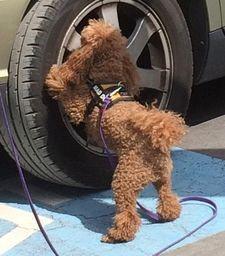
28 Dogs Victoria New Puppy Owner Guide - 22/02/23
Scent Work
Scent work (or nose work) is a relatively new competition in Australia. It sees dogs having to detect one or more target odours and to clearly indicate to its handler the presence of the scent.
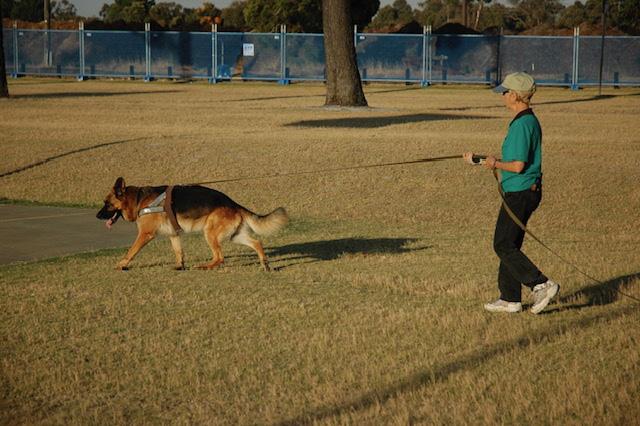
Scents used for nose work are generally essential oils such as birch, anise, clove or cypress. The testing involves the dog finding that target odour in one of a series of containers, within a room or enclosed space, in an outdoor area, and on a vehicle.
Tracking
Tracking involves following the scent of either a known or unknown human. Tracking generally takes place in rural areas – following the person’s path across paddocks or through bush land. Along the way the dog has to indicate articles that have been dropped/left behind by the person they are tracking.
As the dog progresses through the levels the tracks get longer and older, with more turns. Distractions are added, with other people crossing the path of the person the dog is supposed to be following to test that the dog stays on the original scent.
Track and search
Track and Search is a more challenging type of tracking which includes having the dog follow the scent of a human across a variety of surfaces such as roads, sand, gravel, grass and paving, through busy residential areas, as well as tracking both day and night. These tests are meant to simulate the dog following the scent of a missing person through a suburban area.
Many breeds of dog are bred for working long days and large distances across paddocks and hills, or for chasing and catching game. These activities are all about channelling those skills.
29 Dogs Victoria New Puppy Owner Guide - 22/02/23
Fit and fast
Endurance and lure coursing
Endurance test
An endurance test is a dog sport that demonstrates your dog’s fitness to cover large distances whilst remaining fit, sound, and responsive to the handler at the end of the day.
The endurance test is conducted over a distance of 20kms and is split into three legs, the first being eight kilometres, the second and third being slightly shorter at six kilometres with breaks in between each leg to allow both dog and handler to have a drink and cool down. Handlers accompany their dogs either by jogging/running or riding a bicycle beside them at a set pace of 10km/hour.
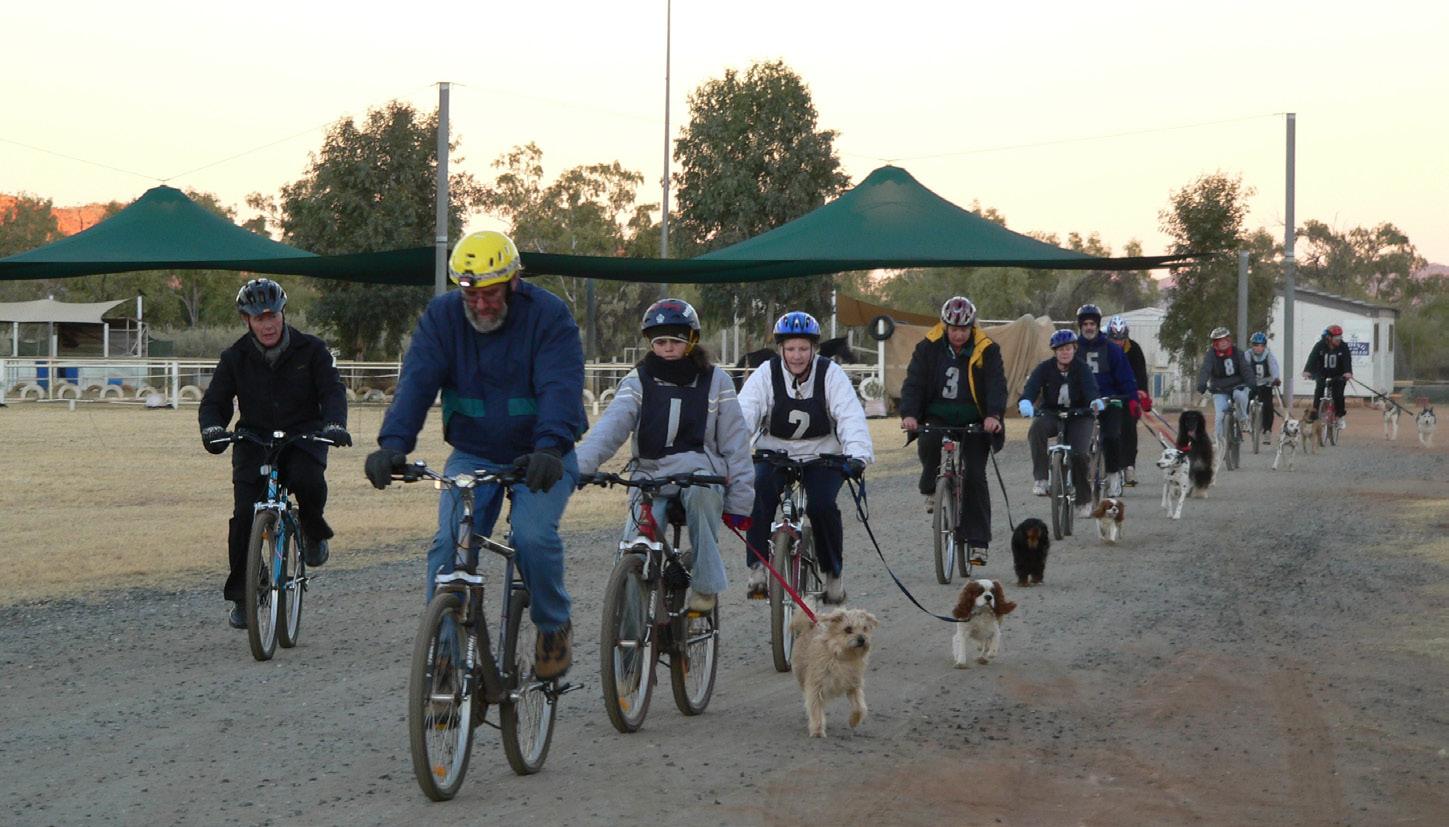
All dogs must undergo a vet check in the weeks leading up to the event, and are examined by a veterinarian at each break to ensure they are fit to continue, and again at the end of the test to ensure they have completed the test with no ill effects.
There is also a simple willingness test at the start and at the end of the 20km to show that the dog’s willingness to respond to commands from the handler is unaffected by the activity.
Lure coursing
Developed for sighthounds, but open to all breeds and associate register dogs who are physically fit, lure coursing involves the dog chasing a mechanical lure over a course that involves twists and turns.
Designed to simulate the chasing of a rabbit or other game, the dogs chase a plastic bag drawn around a set of pulleys by a motor. The dog(s) running are assessed on their speed and focus, and the run is timed. The lure is driven by a skilled person, who speeds it up or slows it down depending on the dog’s speed and distance from the lure.
Lure racing
Although not an official sport, lure racing sees small terrier type breeds race over a straight course chasing an artificial lure. Lure racing opportunities are provided by some of the terrier breed clubs. Unlike lure coursing where dogs compete on their own, lure racing sees a number of dogs all released at the same time, similar to greyhound racing.
30
Victoria New
Owner Guide - 22/02/23
Dogs
Puppy
Doing their job
Hunting, herding, going to ground, sledding and therapy dog
Retrieving and field
If you have a gundog breed – one that has been bred for pointing, flushing or retrieving game for a hunter - you have the option of training your dog for retrieving and/or field work. These events simulate what occurs on a hunt, and dogs are graded on their ability to find game, respond to the commands of its handler and/or its ability to retrieve.
There are different sets of rules and test criteria for each type of gundog.
Retrieving – RATG
If you are just starting out in this sport a Retrieving Ability Test for Gundogs (RATG) may be the place you begin. A scaled down version of full blown retrieving tests, these are often held in conjunction with conformation shows or obedience trials. All gundog breeds (including main register, limited register and neuter register) are eligible to compete along with associate register dogs of a variety that is accepted as a gundog breed are allowed to compete.
Retrieving trials
Full retrieving trials demonstrate the dog’s ability to work under field conditions retrieving fallen game across land, in water and through water. Depending on the level, dogs may have to retrieve multiple times and may or may not get to see where the game has fallen.

Retrieving trials are open to all breeds of gundog (main register, limited register and neuter register), regardless of whether they were bred specifically to retrieve. Associate register gundogs cannot compete, and all handlers must have a gun licence, as guns are fired to simulate hunting conditions.
Field trials
Field trials are designed to closely simulate actual hunting conditions. Dogs are required to work in braces (pairs) to search for, indicate, flush and/ or retrieve game. Dogs are judged on their ability, intensity, responsiveness to commands from the handler, and their hunting manners (their ability to back another dog who finds the game first). The winner of each brace continues to the next round of competition.
Because the different breeds have been bred to work differently, the field trials are sorted by breed with different rules for pointer and setters, spaniels and retrievers, and utility gundogs. All main and limited register gundogs of the correct breed whether de-sexed or entire are allowed to compete.
Handlers must have a current gun licence, and trials can only occur when hunting season is declared open – meaning there may be no tests in years of drought.
31 Dogs Victoria New Puppy Owner Guide - 22/02/23
Going to ground Earth dog
Earth dog is an instinct test for small terriers and other breeds that were originally bred for hunting burrowing animals. Dogs have to enter and follow an underground maze using only their keen sense of smell. Earth dog provides a great outlet for those terrier breeds who live in suburbia and who do not have the opportunity to dig and hunt at home.
Herding them up Herding
Many popular breeds have been bred for their herding and stock working abilities. In fact, working farm dogs have been the backbone of Australia’s rural industries for centuries. Herding as a dog sport, provides working breeds with the opportunity to use and hone their skills, and for handlers to learn how to direct and best use their dog’s abilities.
Herding competitions see dogs herd either ducks or sheep through a course that includes gates in a controlled and calm fashion. Dogs are graded based on their responsiveness to their handler, and their ability to move the animals correctly.
Helping others Therapy dogs
Many breeds were simply bred to be great companions. If your dog has an unflappable temperament and loves people, it might be that you are suited to therapy work.
Research has shown the value of animal assisted therapies – be it helping children learn to read, reducing fear in places such as dentists, court rooms and hospitals, and providing a valued visitor in nursing homes, palliative care units and rehabilitation facilities.
Dogs Victoria has a small team of dogs who have been assessed for their abilities in this highly demanding environment. Handlers must have the time, people skills, and desire to spread canine joy into some highly stressful environments.
Sled sports
Many breeds of dog were bred for their ability as a draft animal – pulling a sled across snow or pulling a cart to market. A variety of sports have been developed based on these skills.
Sledding
In Australia, sledding is usually done on a dirt track, but there are a few events held on snow. Dogs pull a scooter (single or two dog teams) or three wheeled rig (for larger teams) for a distance of 3-5 kilometres. Dogs must be physically fit and trained to follow directional cues from their handler.
Back packing
Back packing sees dogs greater than 10kg carry a pack as they accompany their handler over a hike of a set distance.
The weight of the pack is based on a percentage of the dog’s body weight, so dogs must be physically fit, and trained to carry a properly fitted pack – great for dogs and handlers who love a long walk.
Weight pull
Weight pull sees dogs compete by pulling a heavy load over a relatively short distance. Dogs compete in weight categories, starting at 15kg body weight, and are required to pull a loaded trolley with their handler only providing a verbal cue.
Draft
Many dogs were bred to assist their owners by pulling a cart, similar to horses and donkeys.
Draft competition sees dogs showcase their ability to pull a cart through an obstacle course whilst demonstrating a responsiveness to their handler and a desire to perform the activity.
32 Dogs Victoria New Puppy Owner Guide - 22/02/23
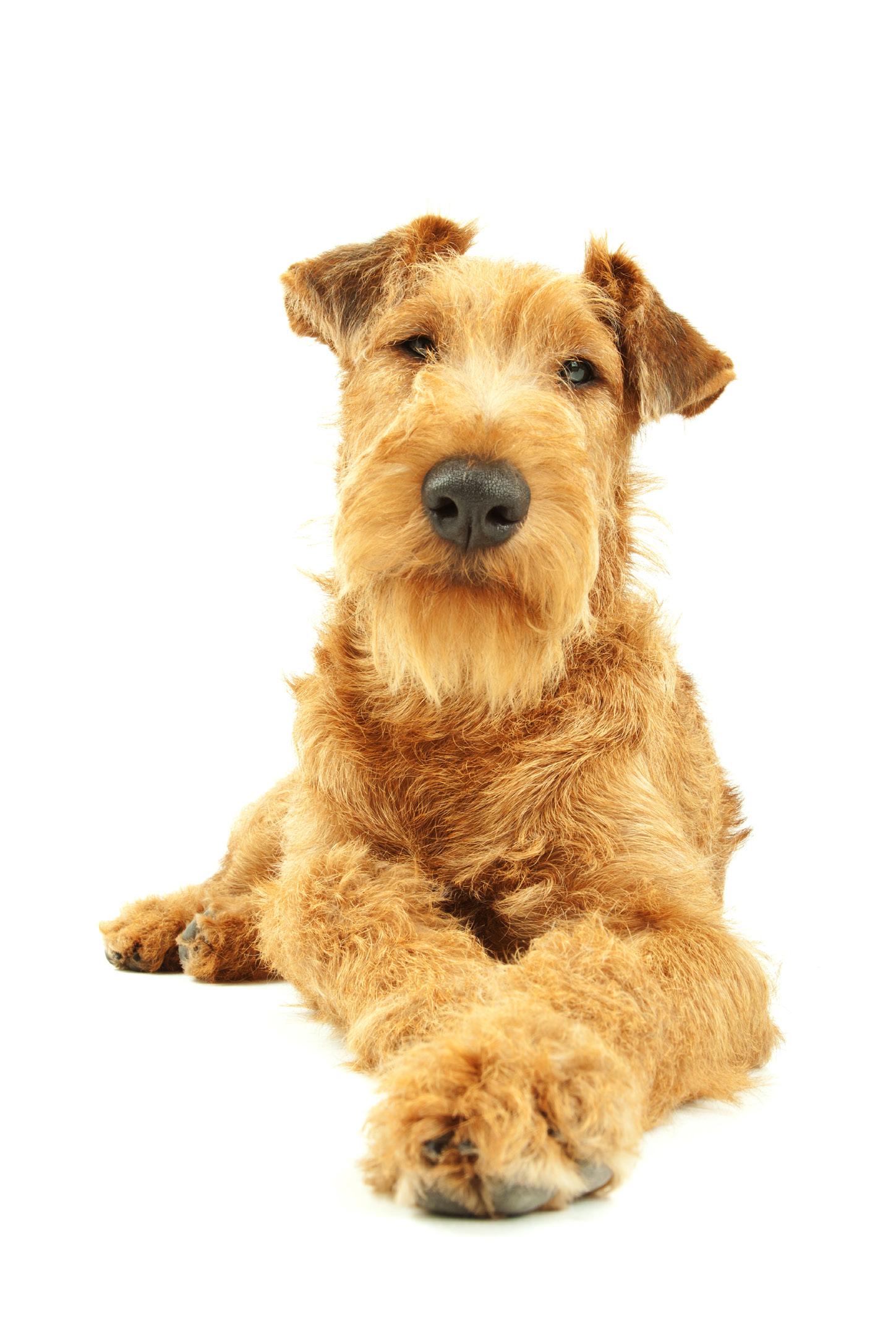
33 Dogs Victoria New Puppy Owner Guide - 22/02/23
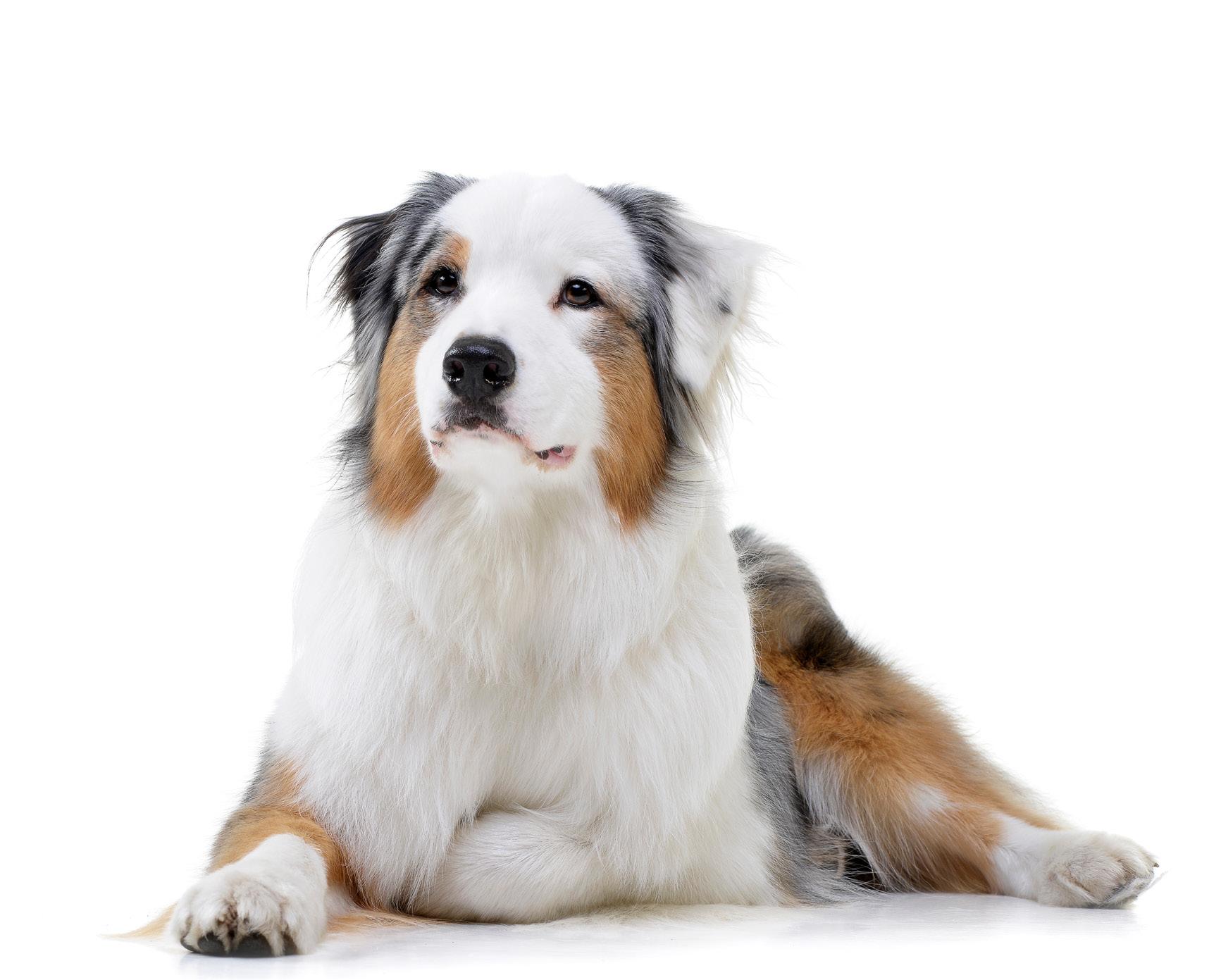
3 - Benefits of joining Dogs Victoria
If you have recently added a puppy or an older dog to your family, there are many reasons that you should consider joining Dogs Victoria:
Promoting happy, healthy dogs and responsible pet ownership
Making sure all dog owners are aware of community expectations and laws relating to dog ownership within Victoria.
Ethical breeding
Dogs Victoria aims to promote best practice within the dog breeding community.

Our Breeder Education Package provides training and information for members who want to breed purebred pedigree dogs.
Unique dog-friendly venues
State Dog Centre (KCC Park)
» Located in Melbourne’s south east
Bulla Exhibition Centre
» Located just north of Melbourne airport

Join in

Meet like-minded dog owners and explore all of the activities and sports that you can do with your dog.
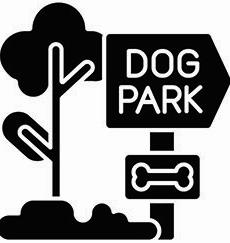
Members save

Dogs Victoria members may be eligible for discounted council registration.
If you hold a Dogs Victoria Breeder Prefix there are some additional benefits.
A voice for ALL dog owners
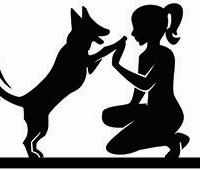
Dogs Victoria lobbies government at both state and local levels on behalf of all dog owners across the state.
Compete
Dogs Victoria, and our affiliated clubs host events, shows, and competitions nearly every weekend.
There are even special competitions for juniors !

Dogs Victoria website
Access a world of up to date dog related information. Whether you are looking for a dog, have a new puppy, or have been a dog owner for years, there is something for you.
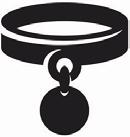


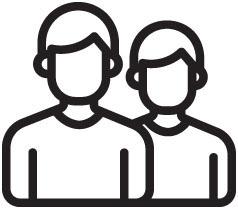
Clubs
With over 200 affiliated clubs located all across the stateoffering community-based dog training, dog sport specific training, and clubs uniting people with a passion for a specific breed.
Magazine
Our monthly magazine is full of dog related information and articles as well as details of events and competitions.

Library

Located at KCC Park, the library hosts a unique collection of dog-related books and magazines.
Museum
We even have a museum filled with dog history and memorabilia! The museum is located at KCC Park
35
Victoria New Puppy Owner Guide - 22/02/23
Dogs
Dogs Victoria 655 Westernport Hwy, Skye 3977 t: 03 9788 2500 f: 03 9788 2599 office@dogsvictoria.org.au







































